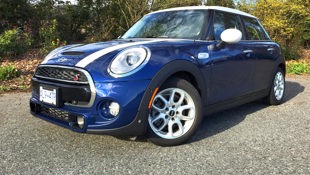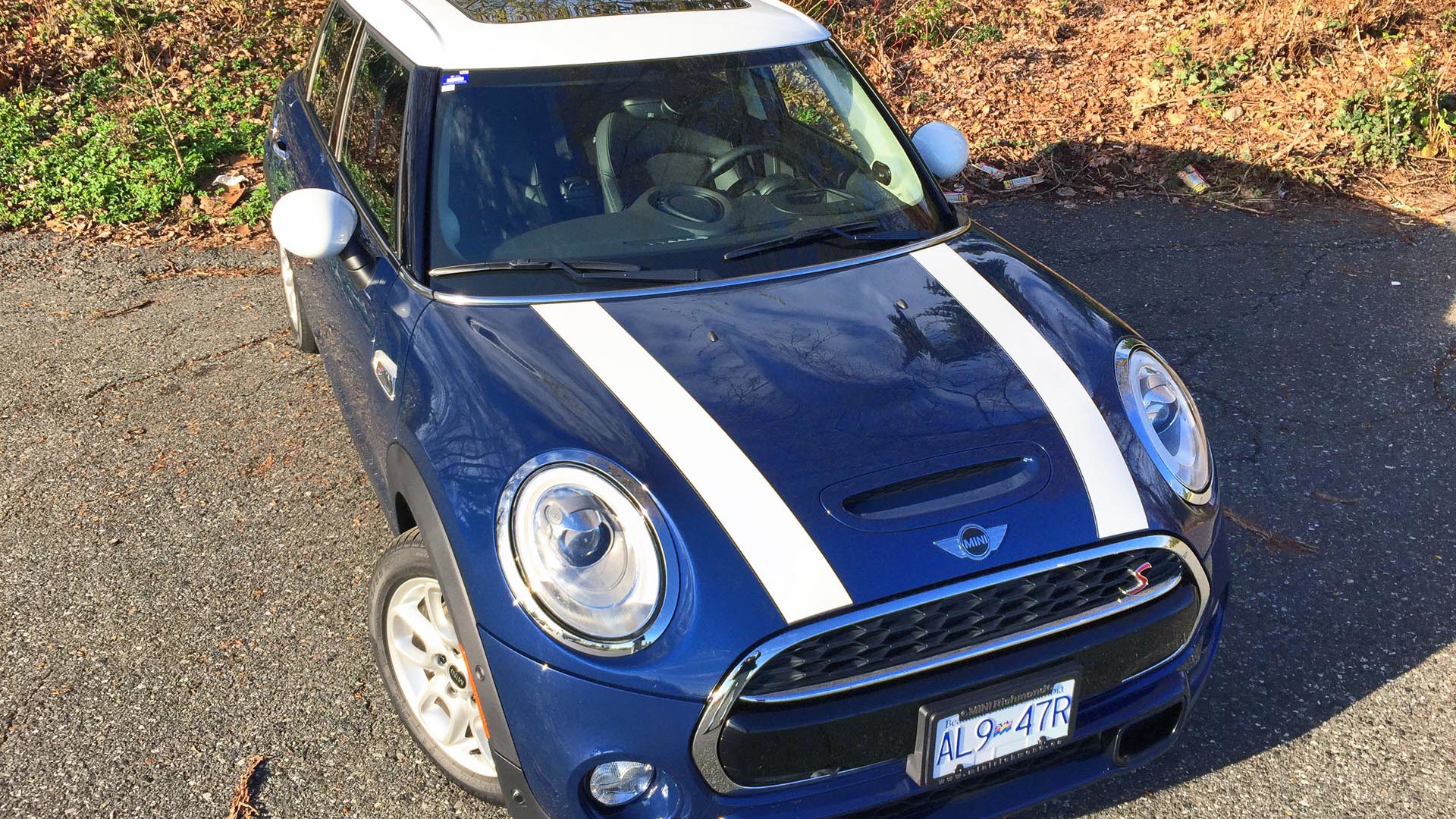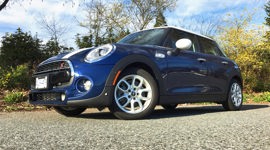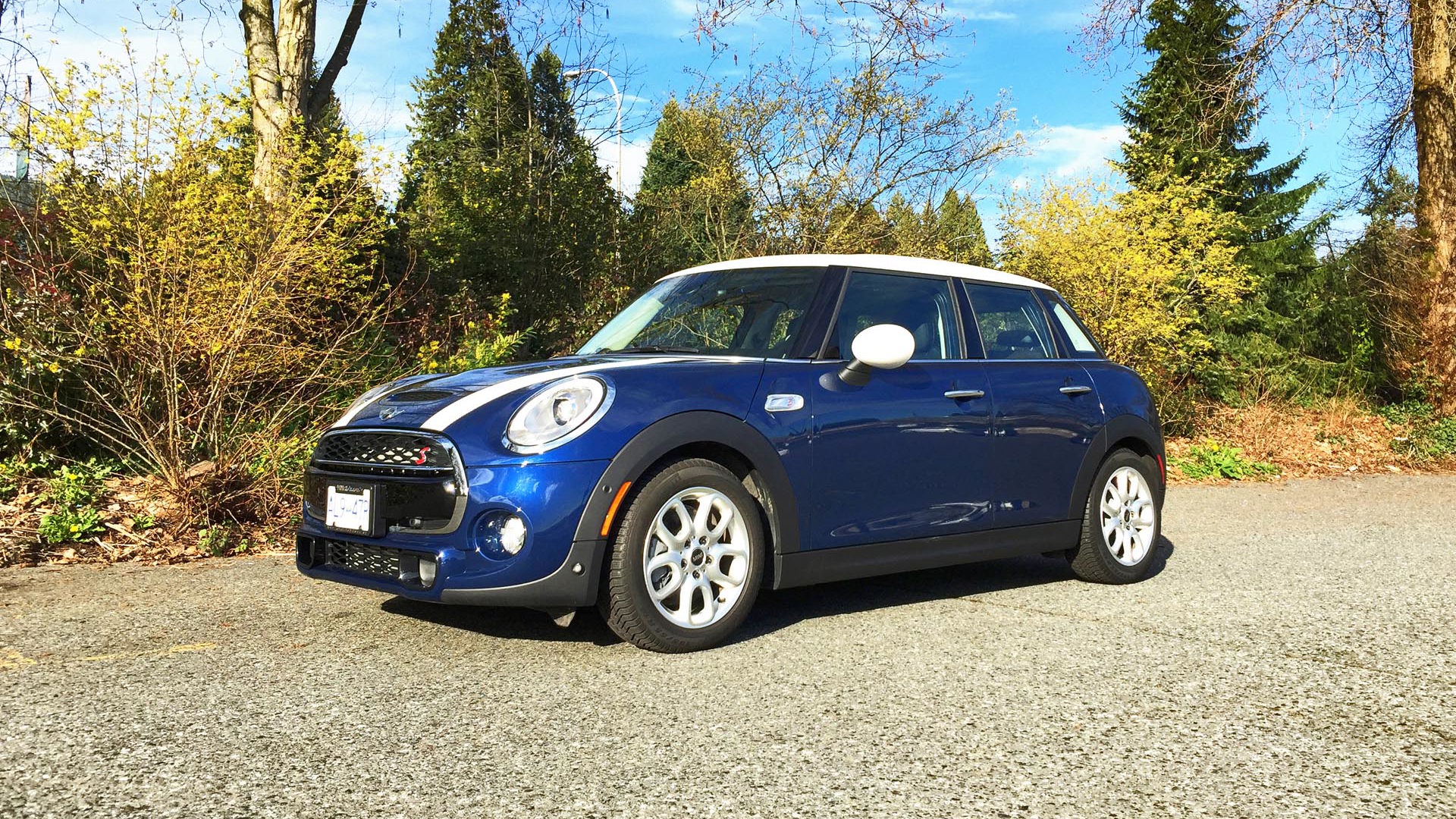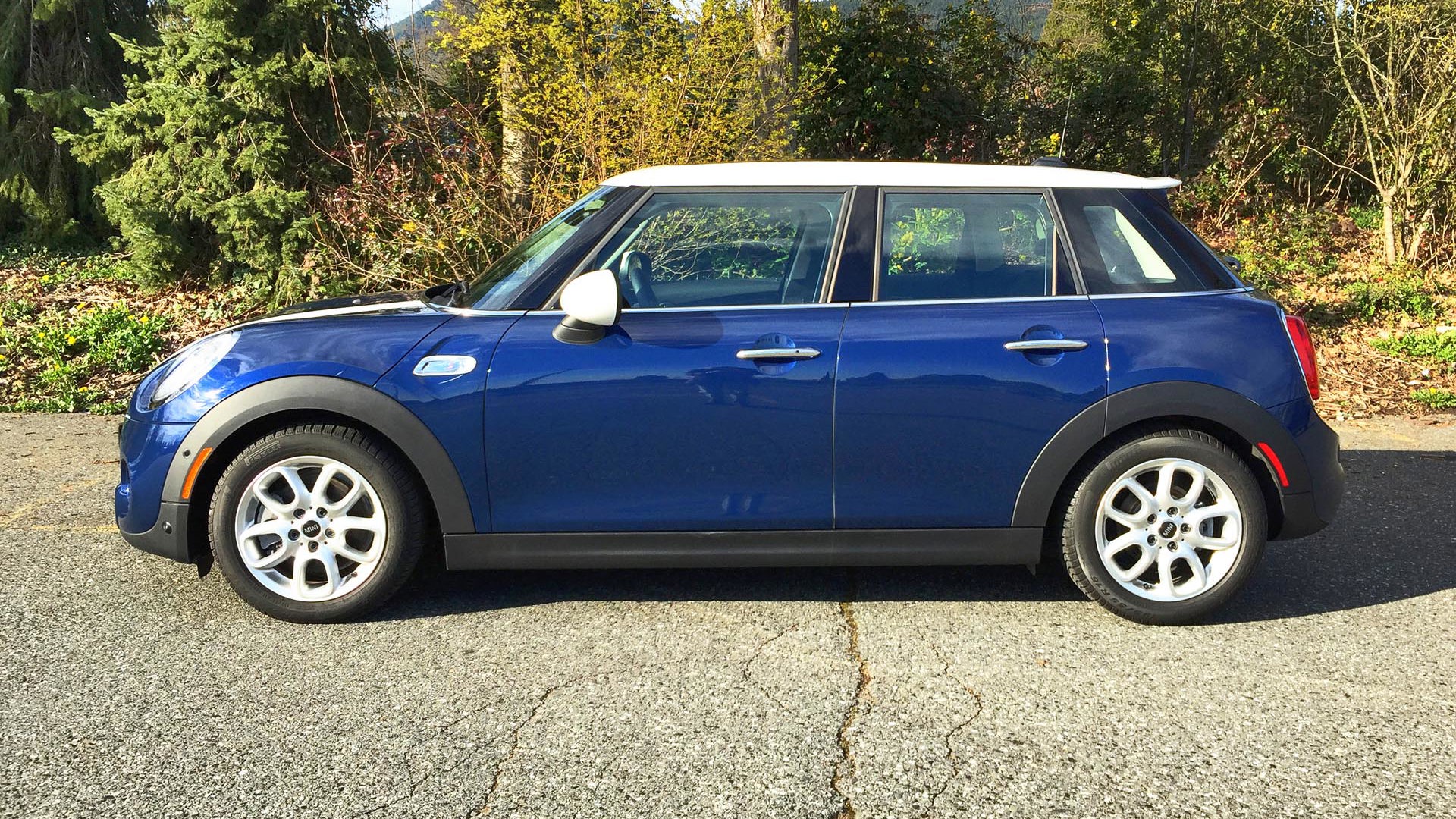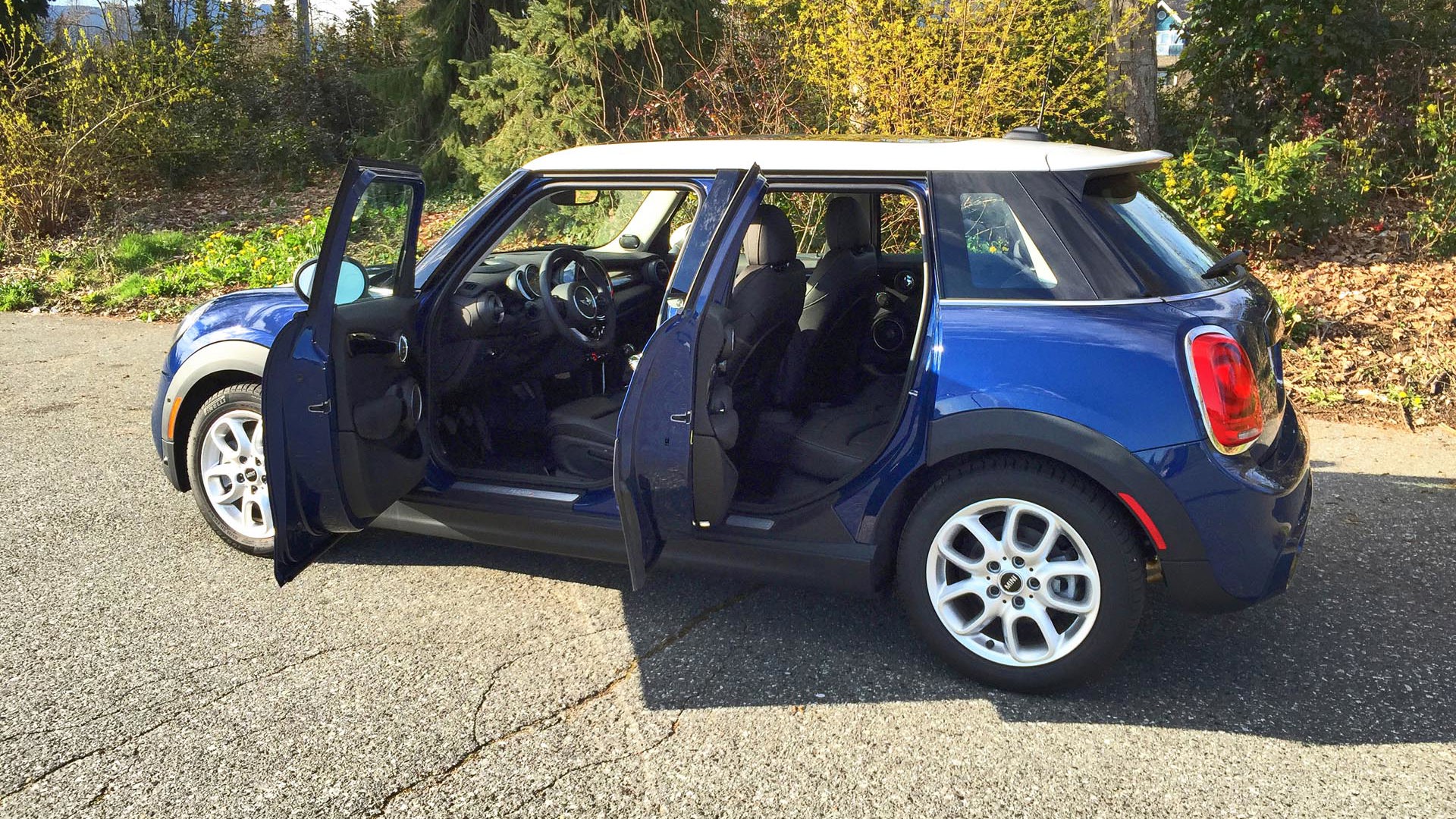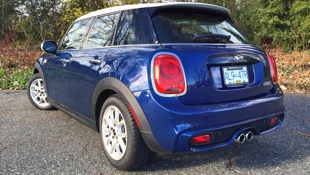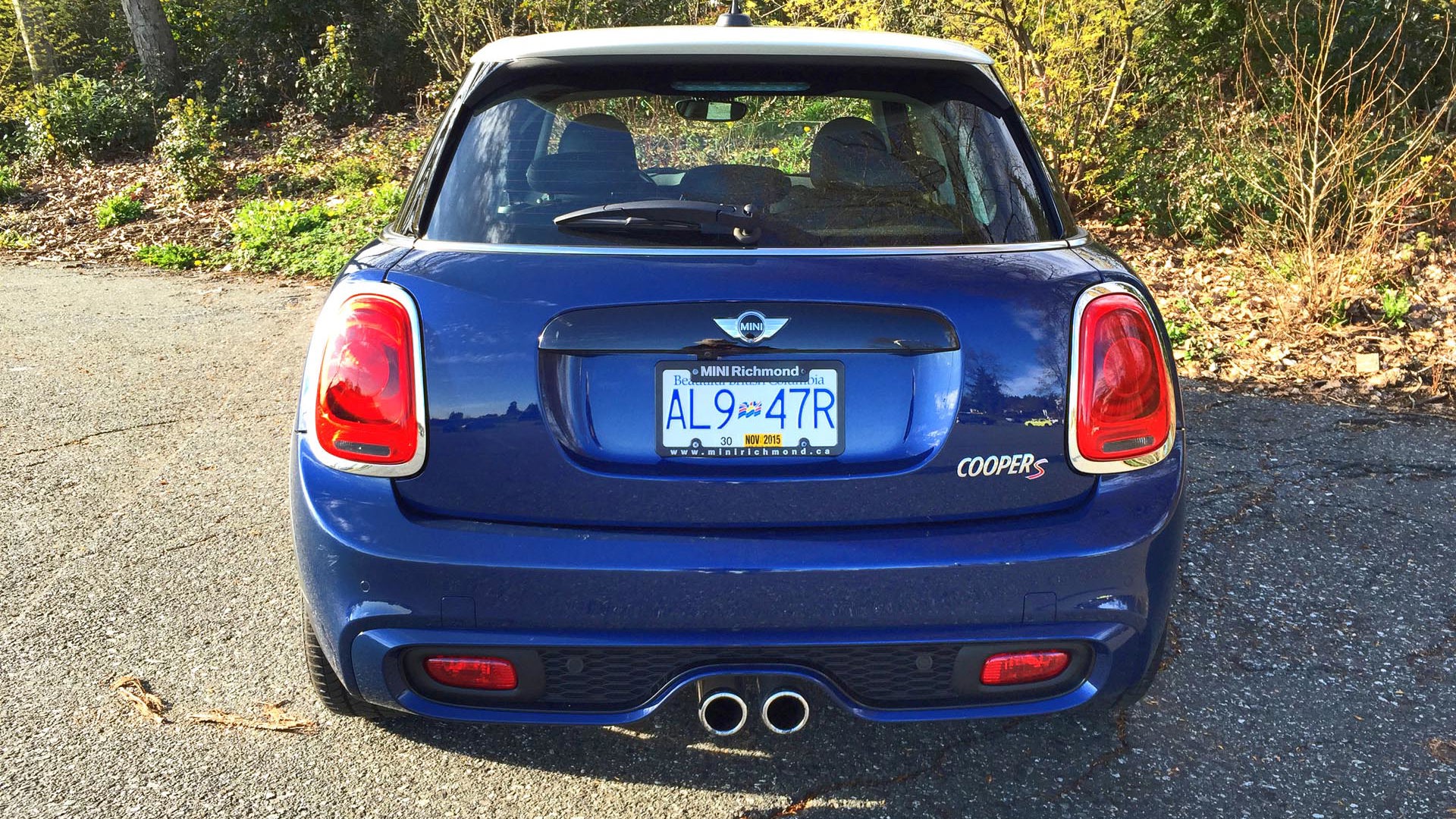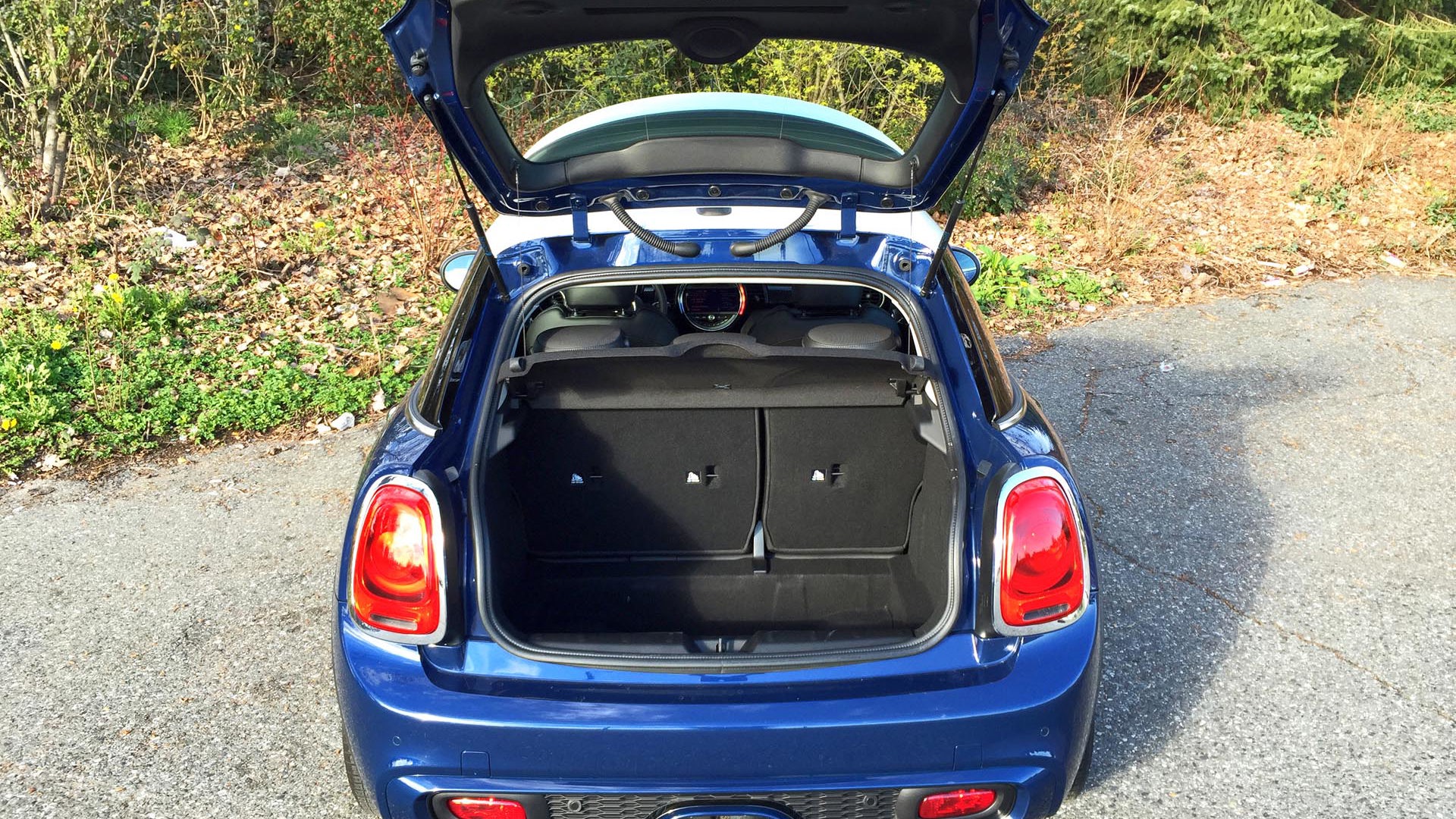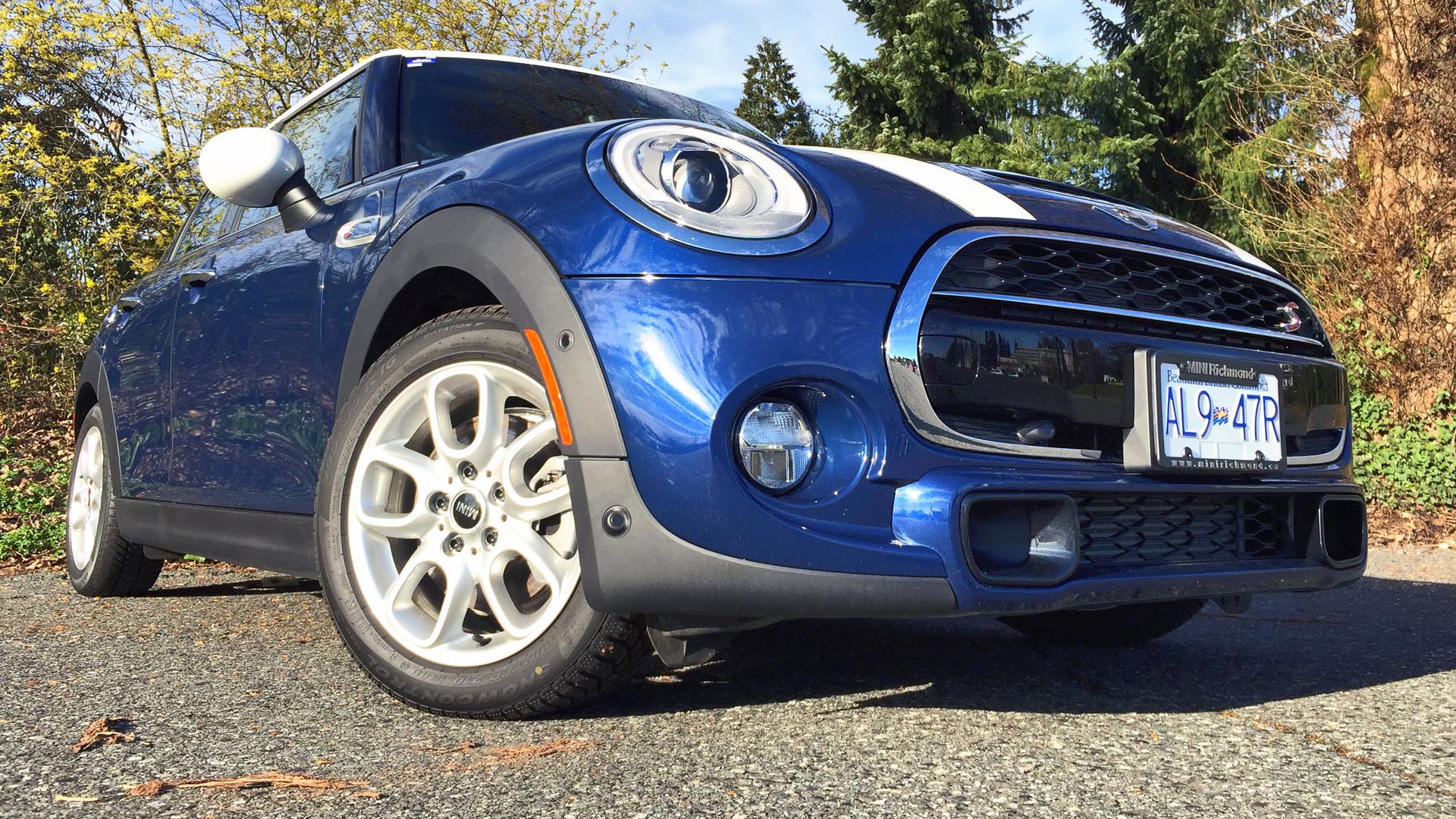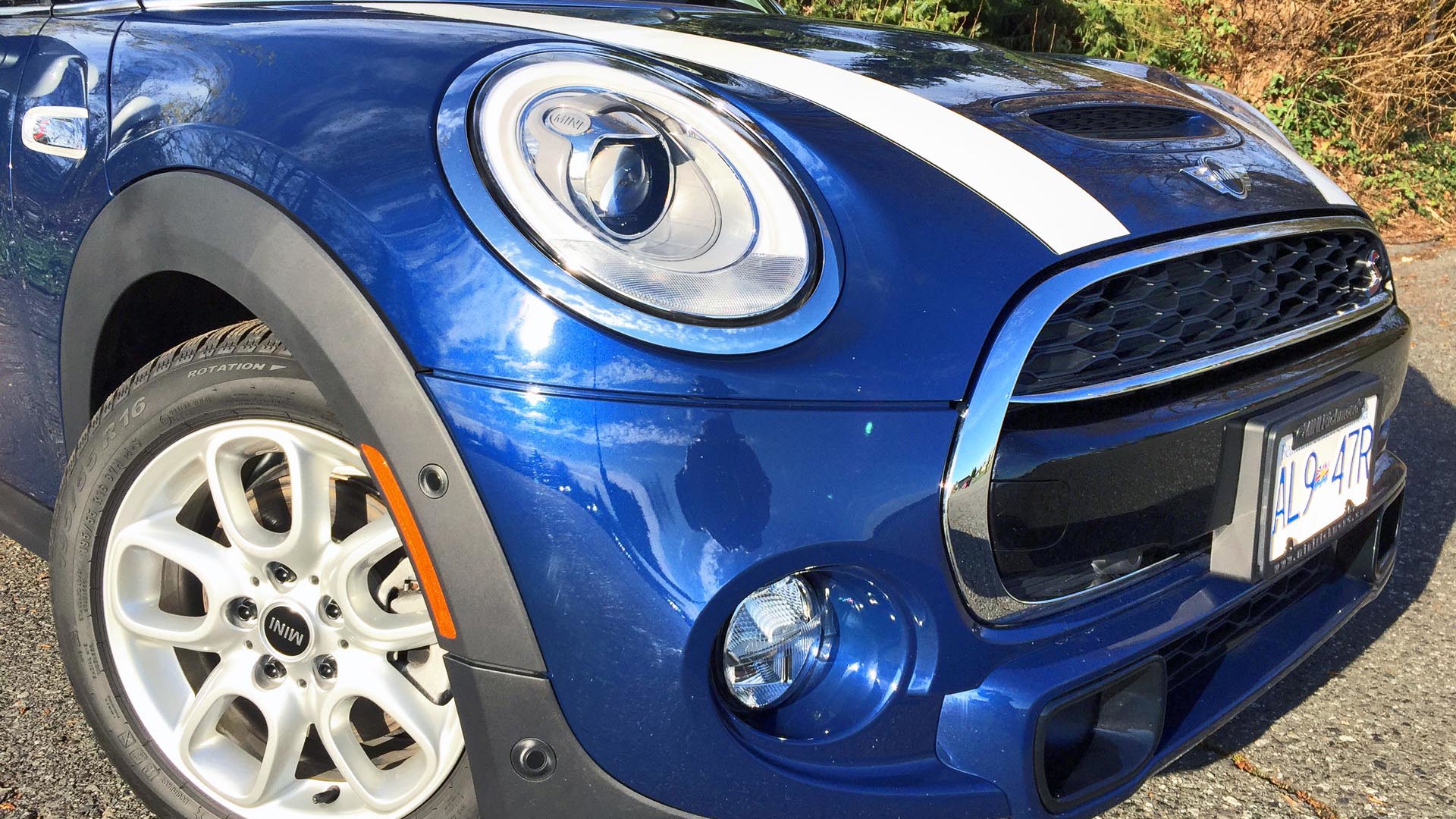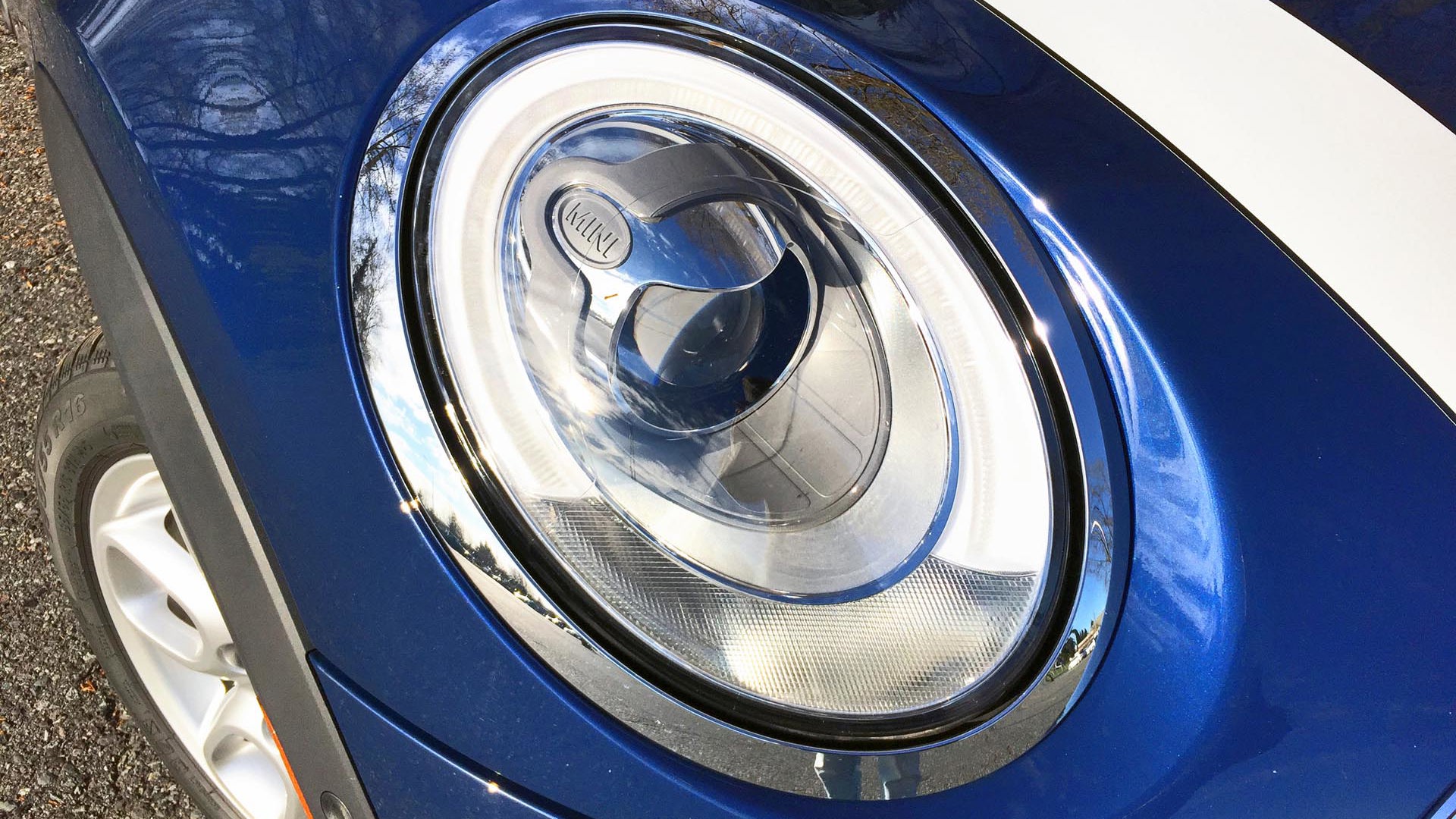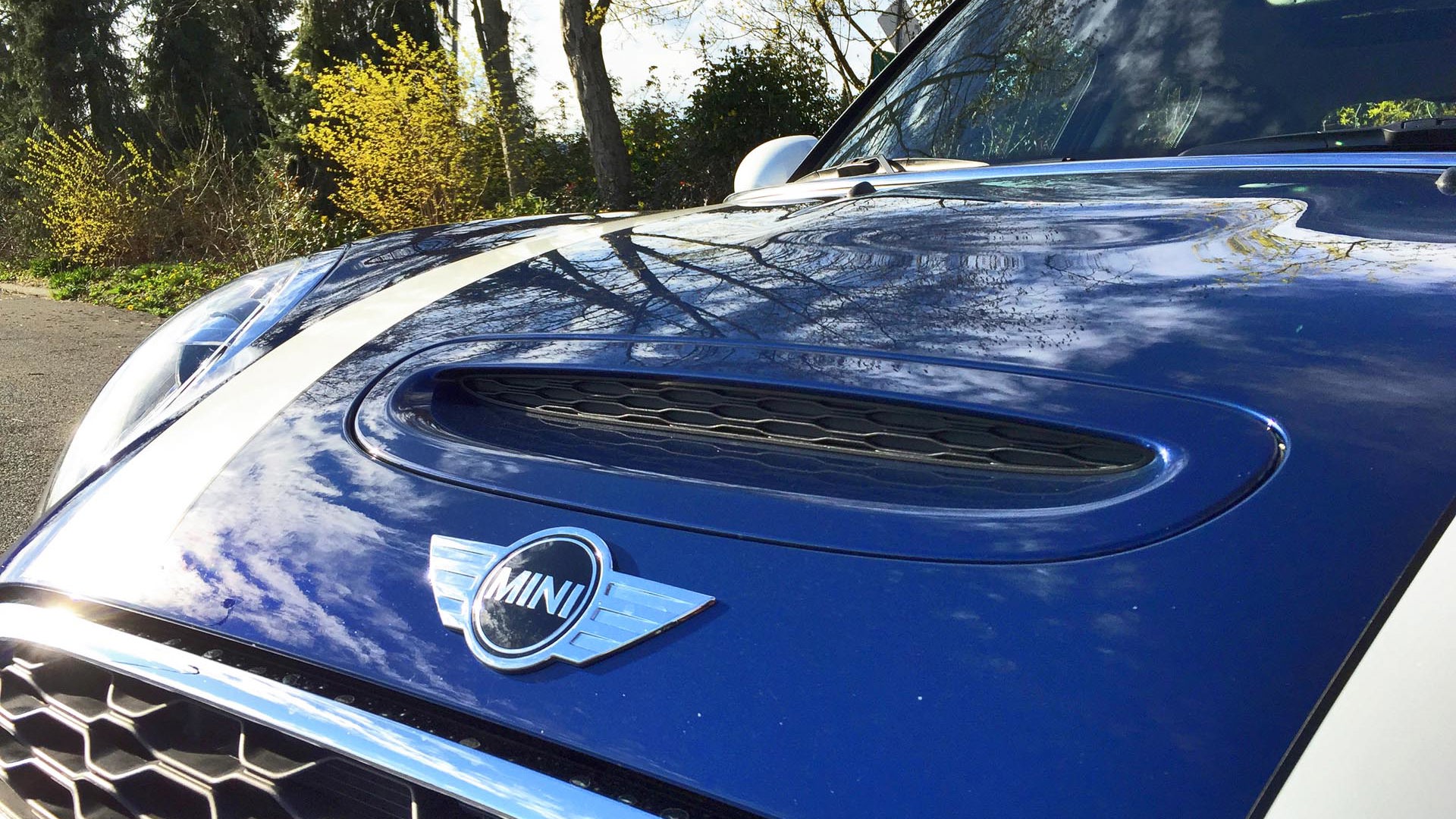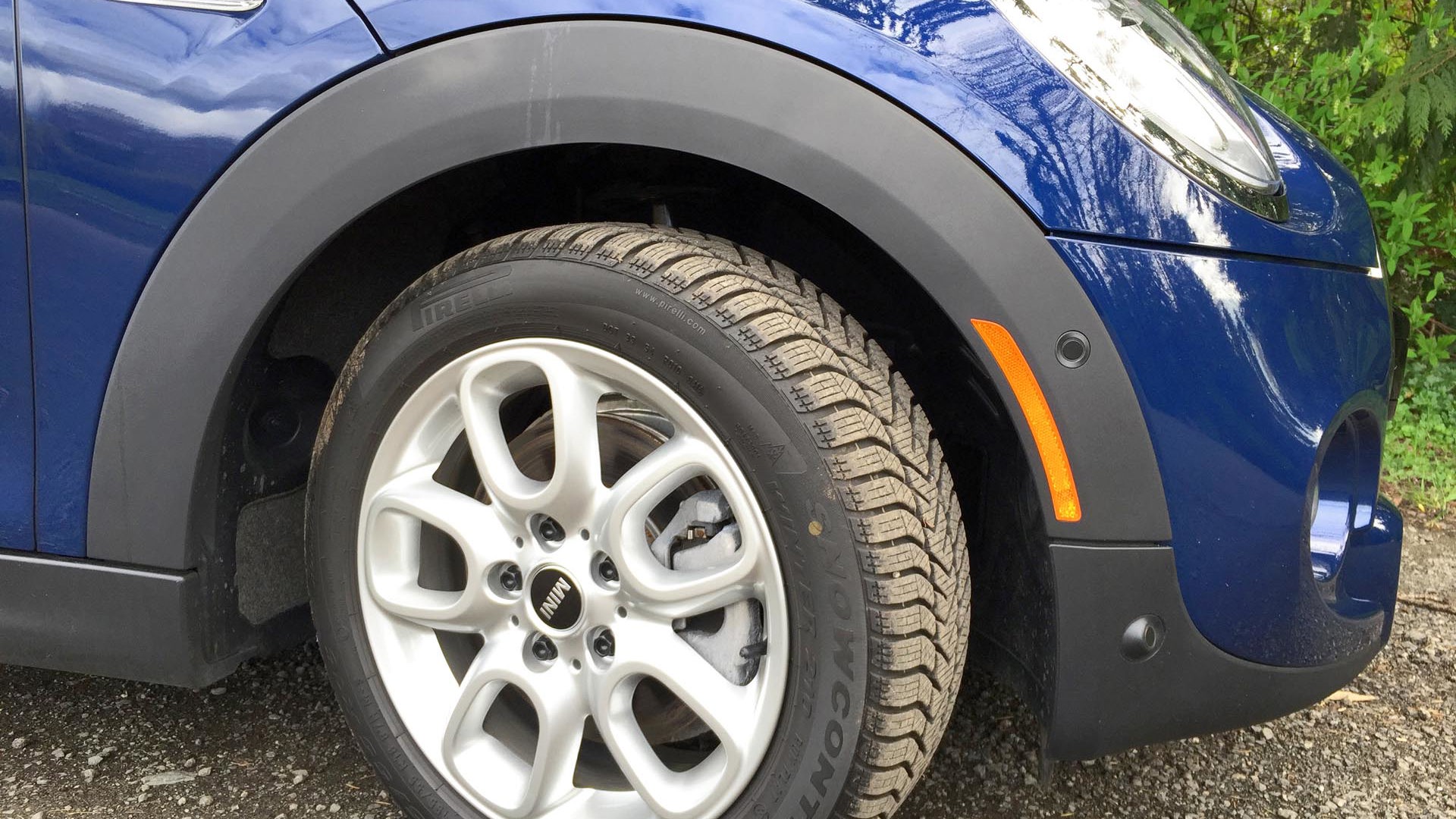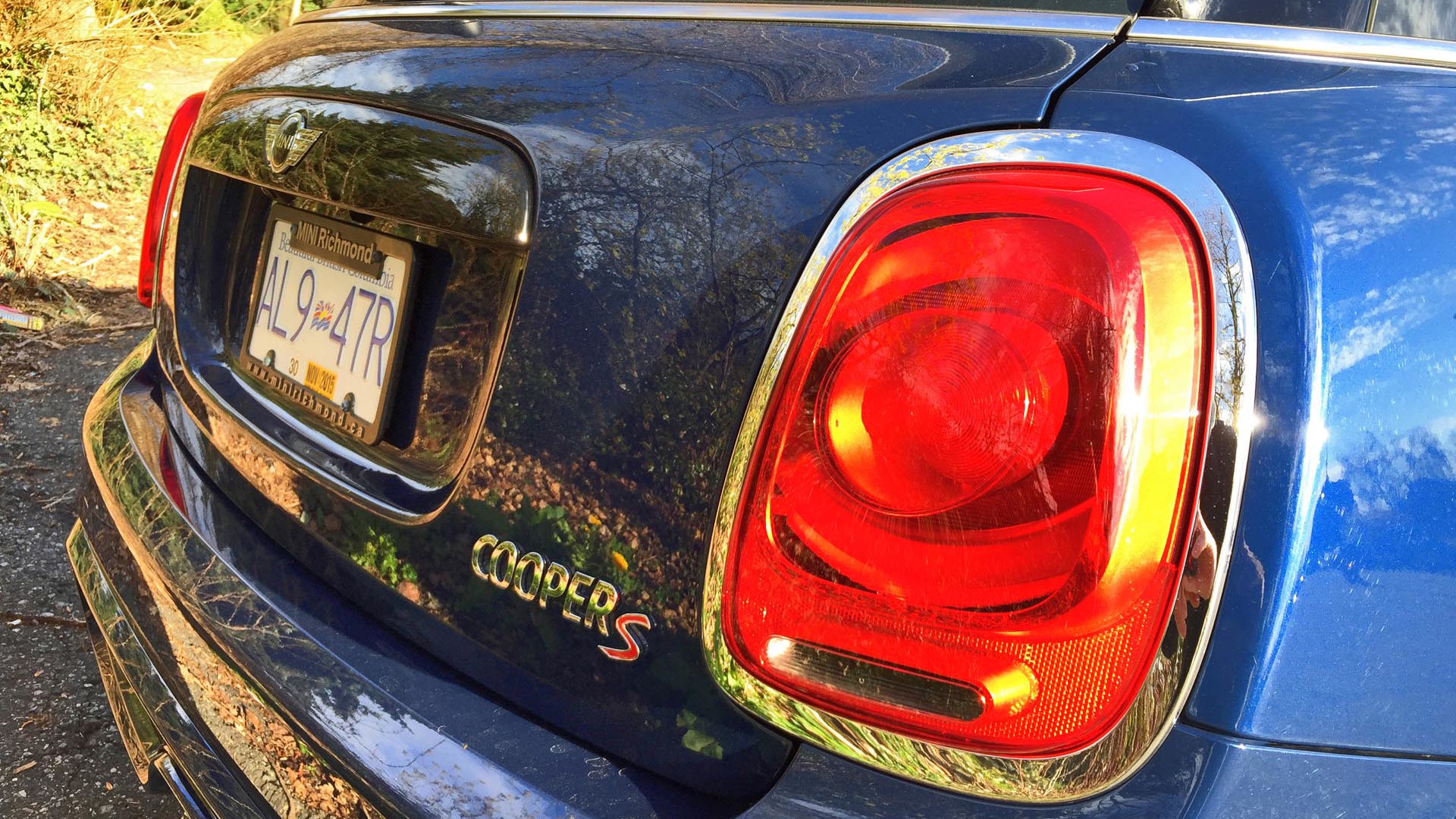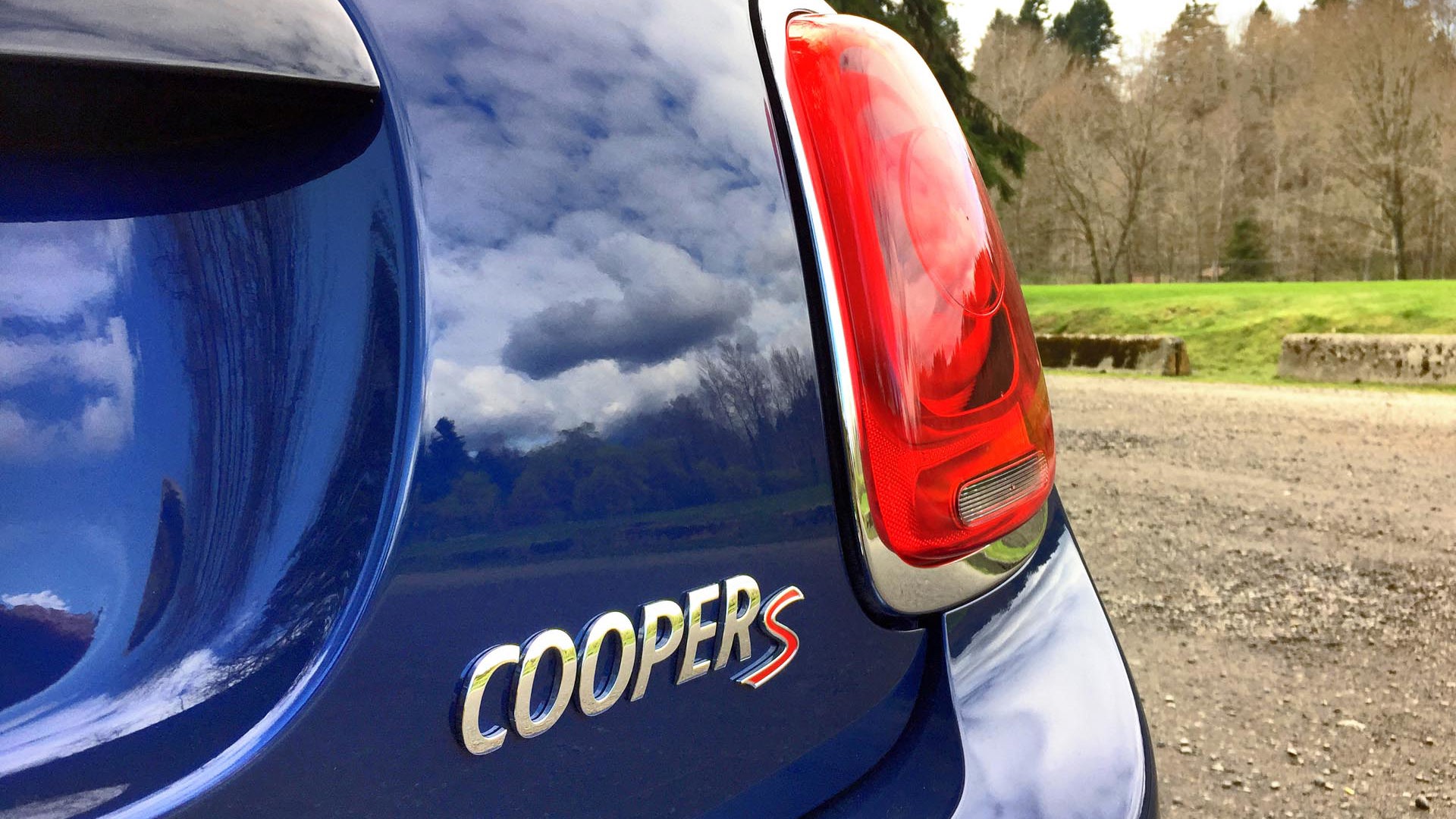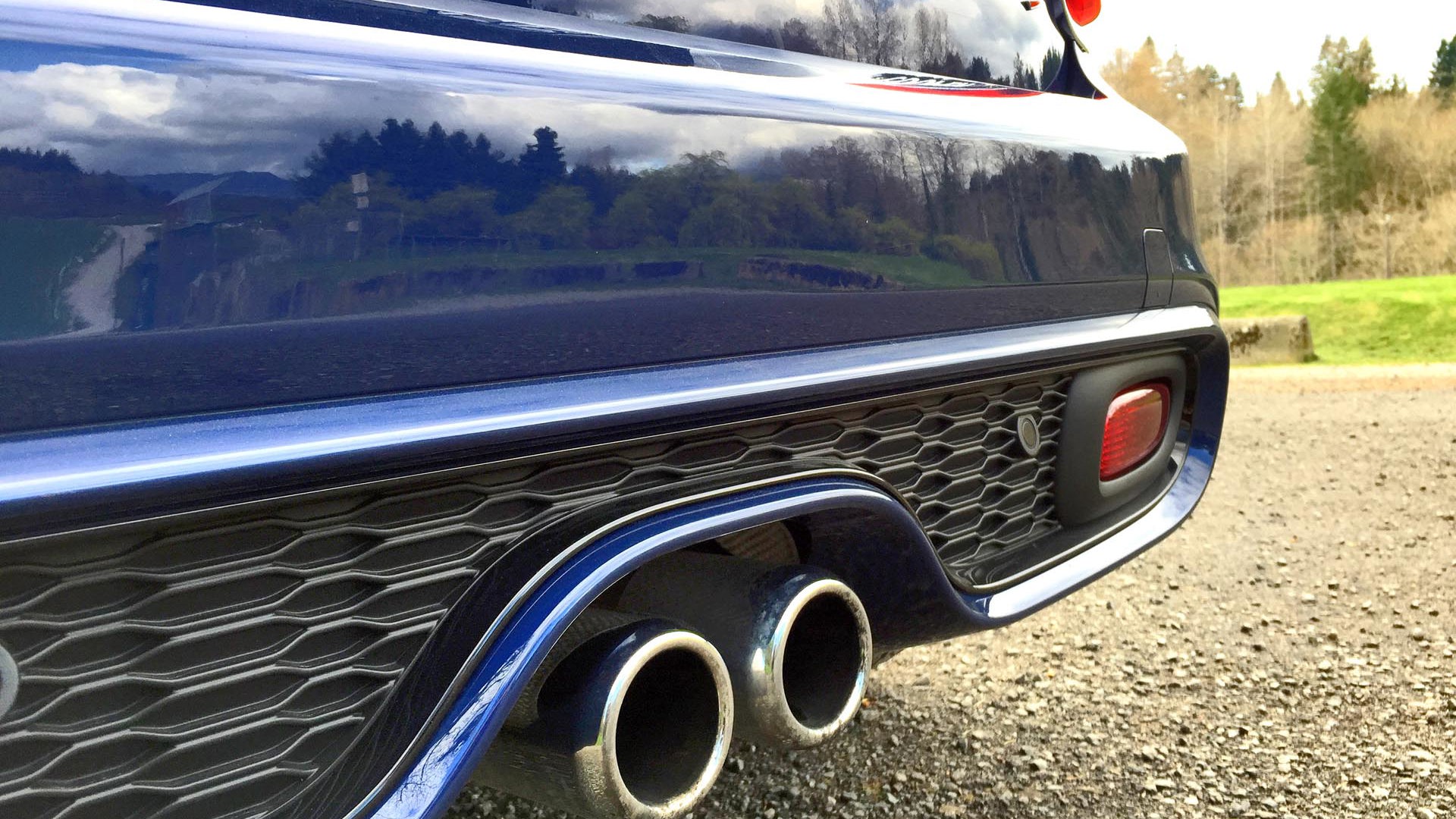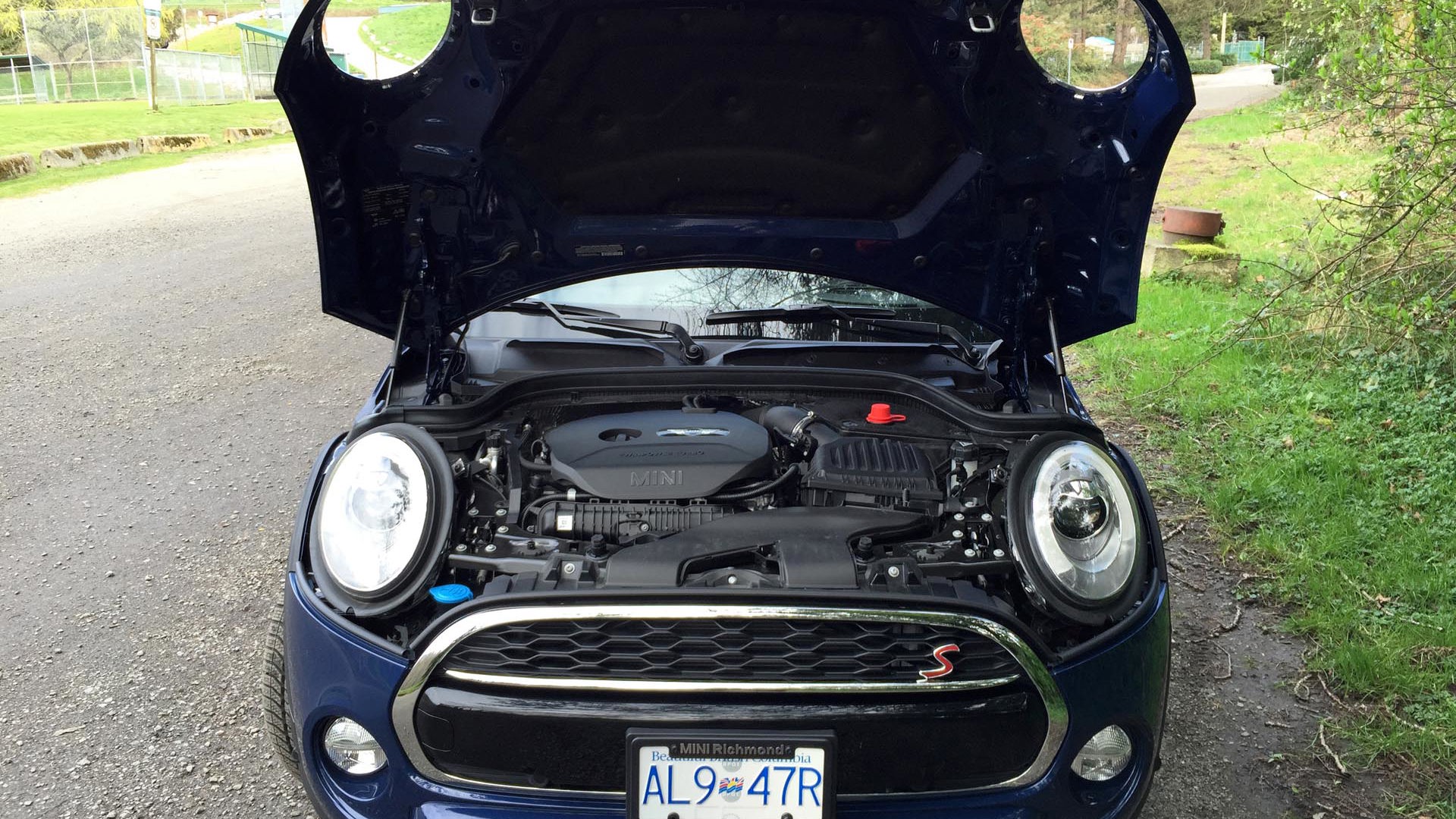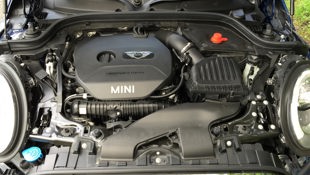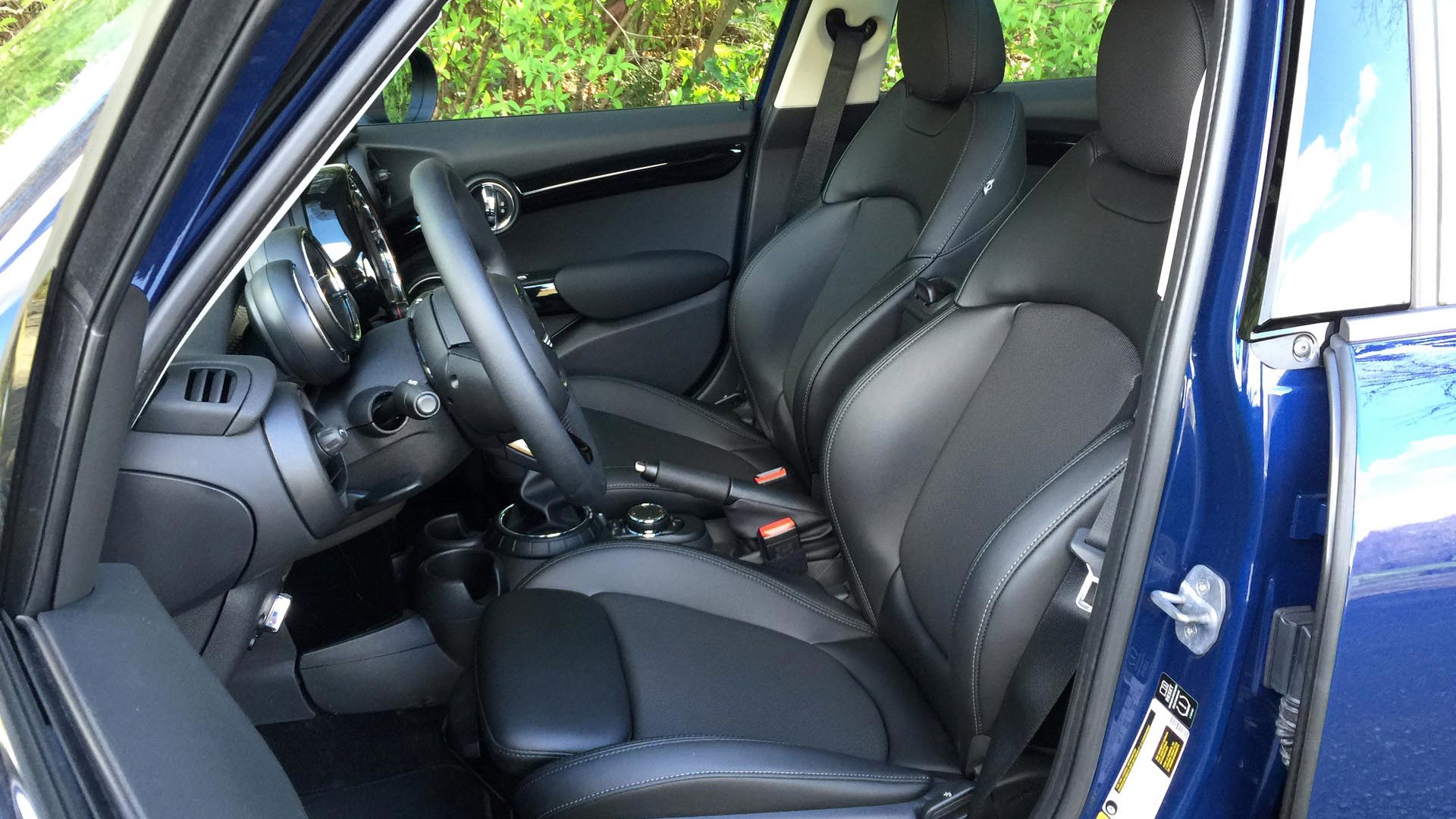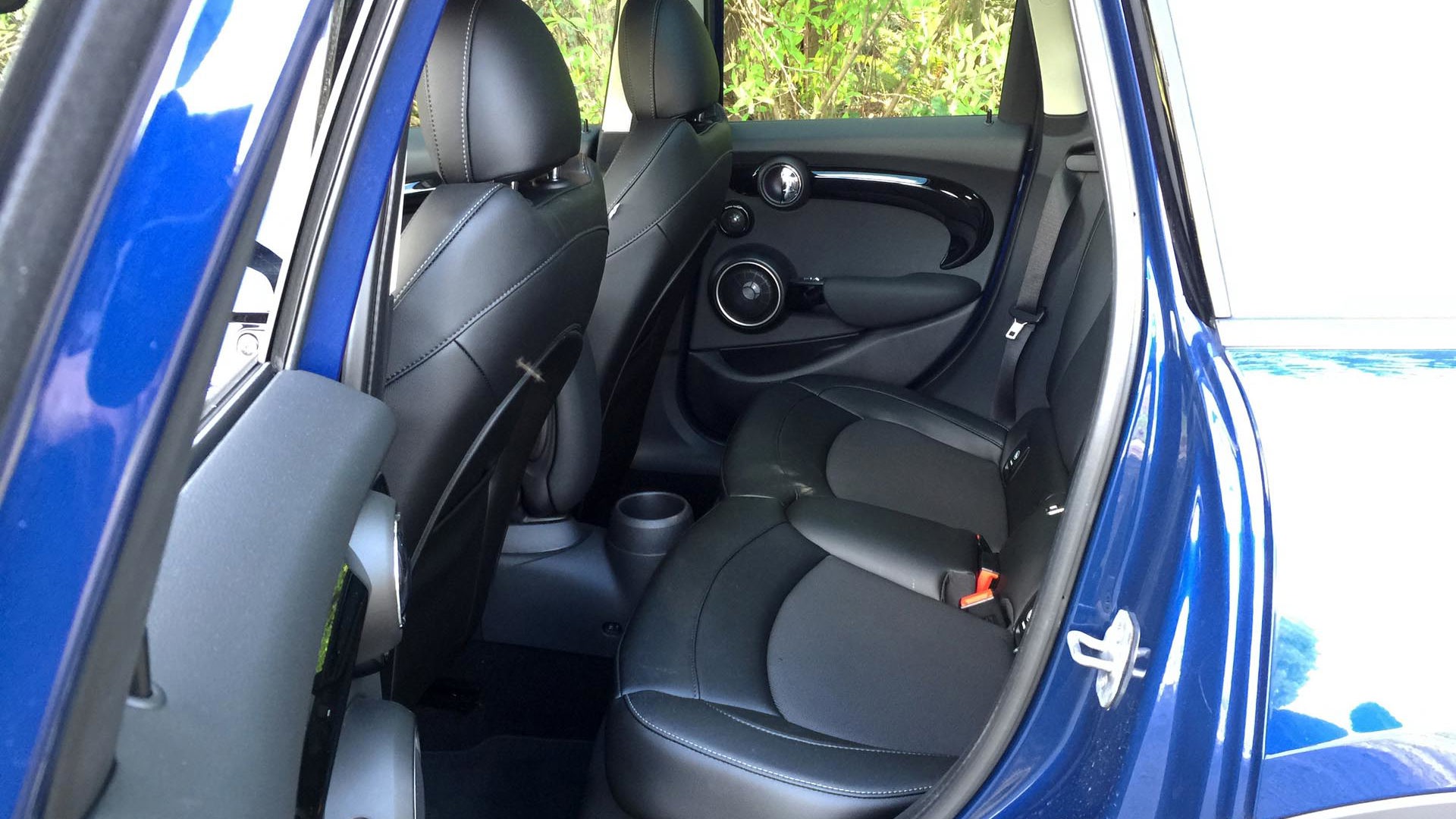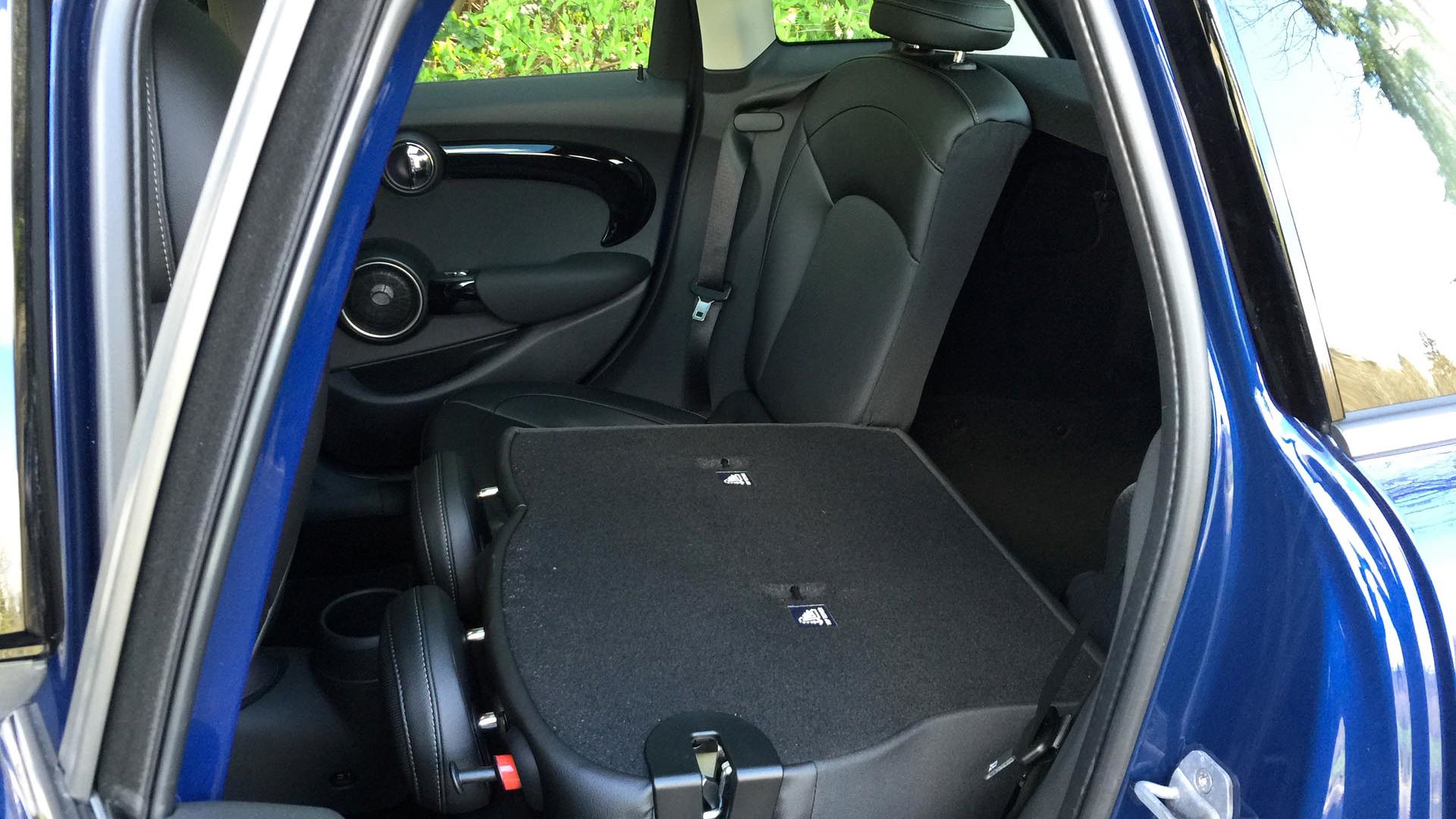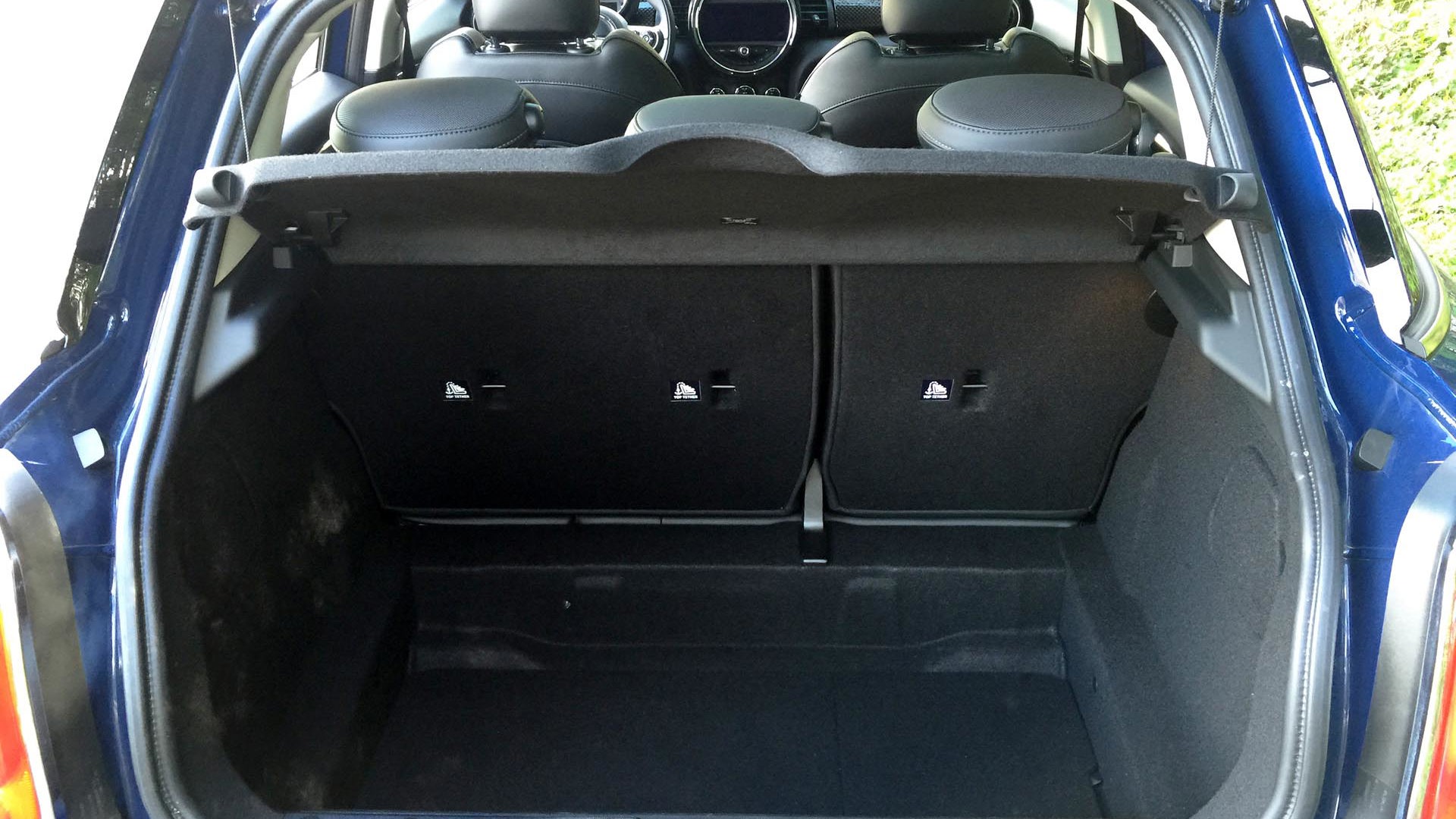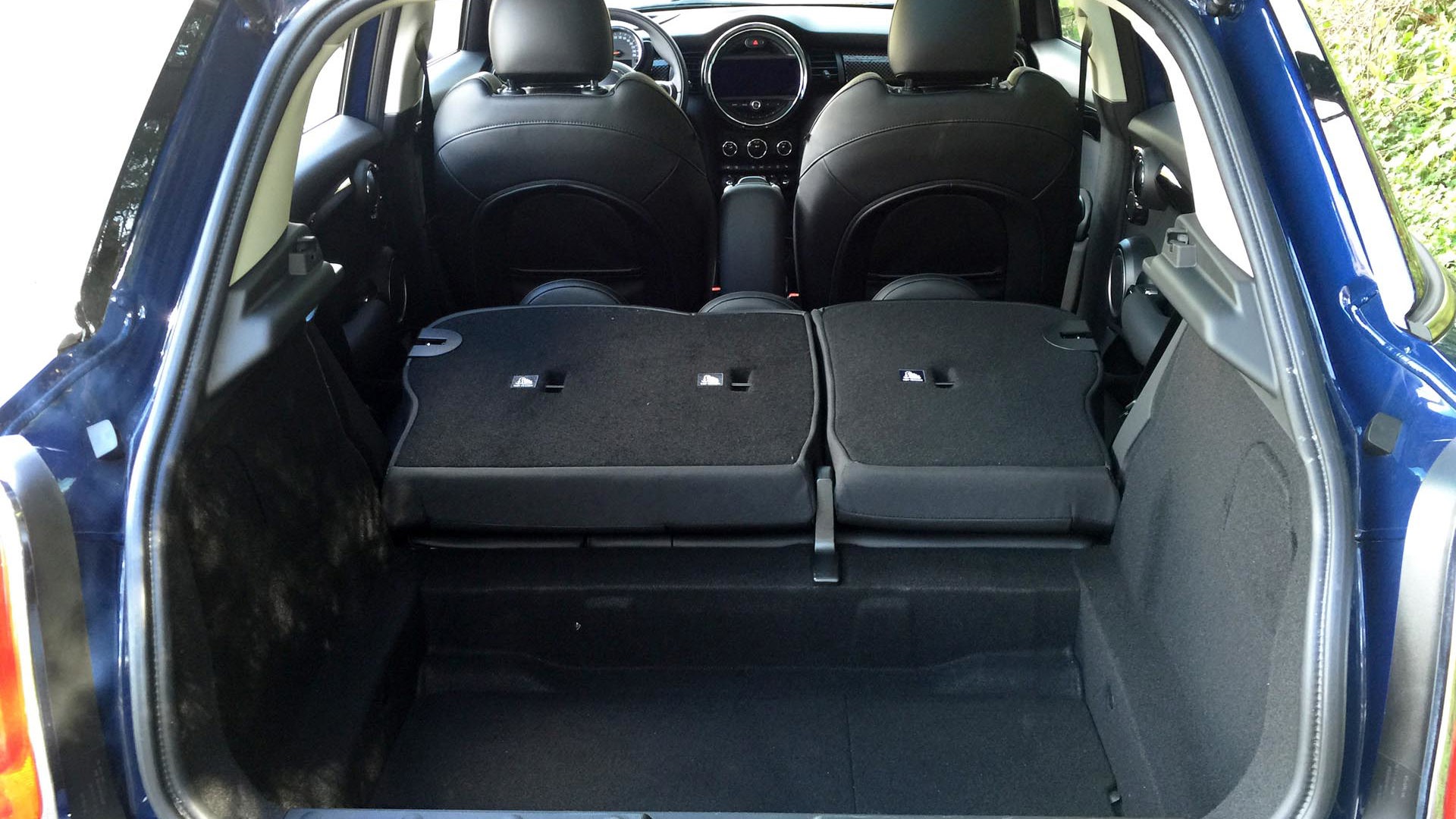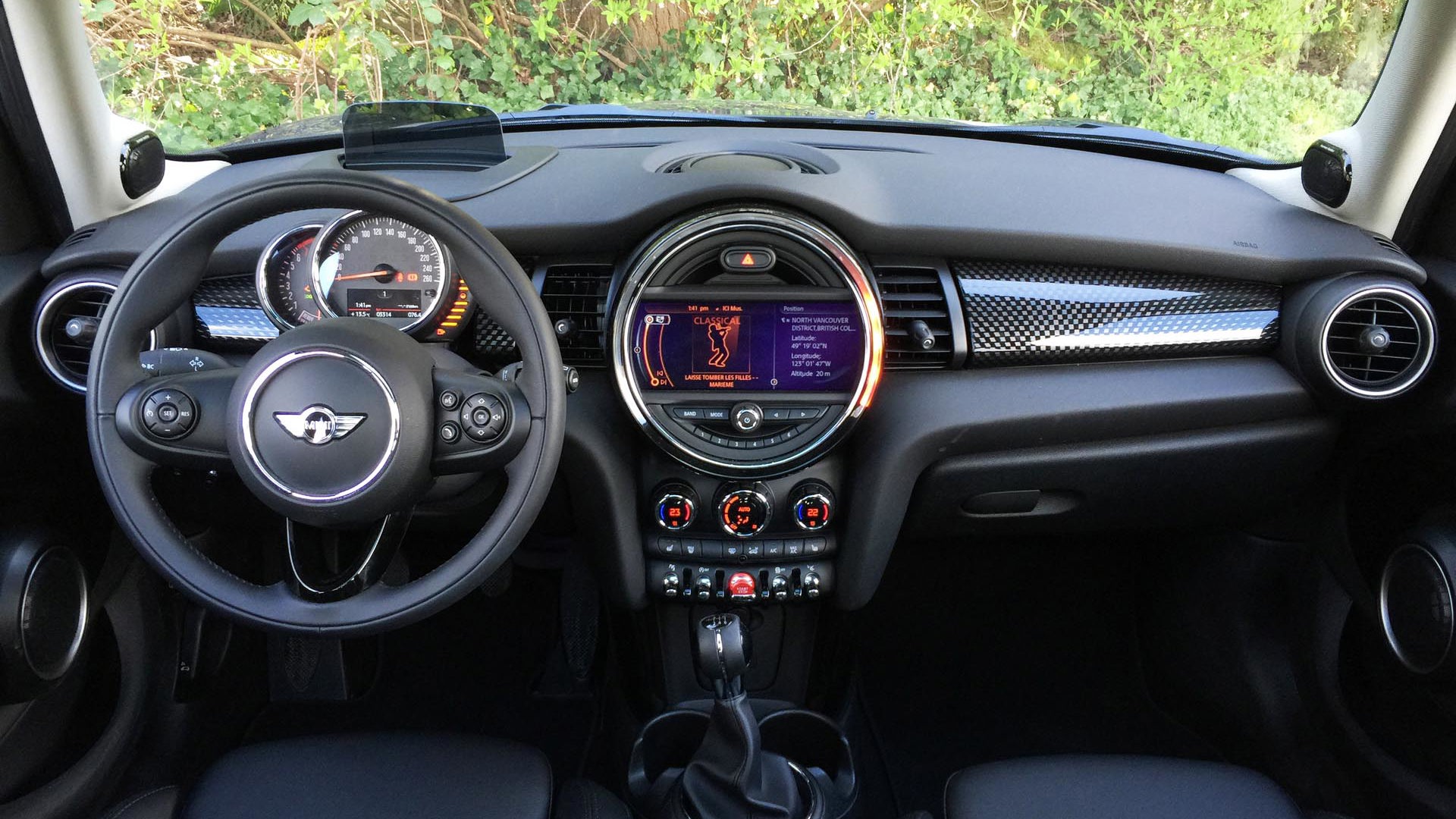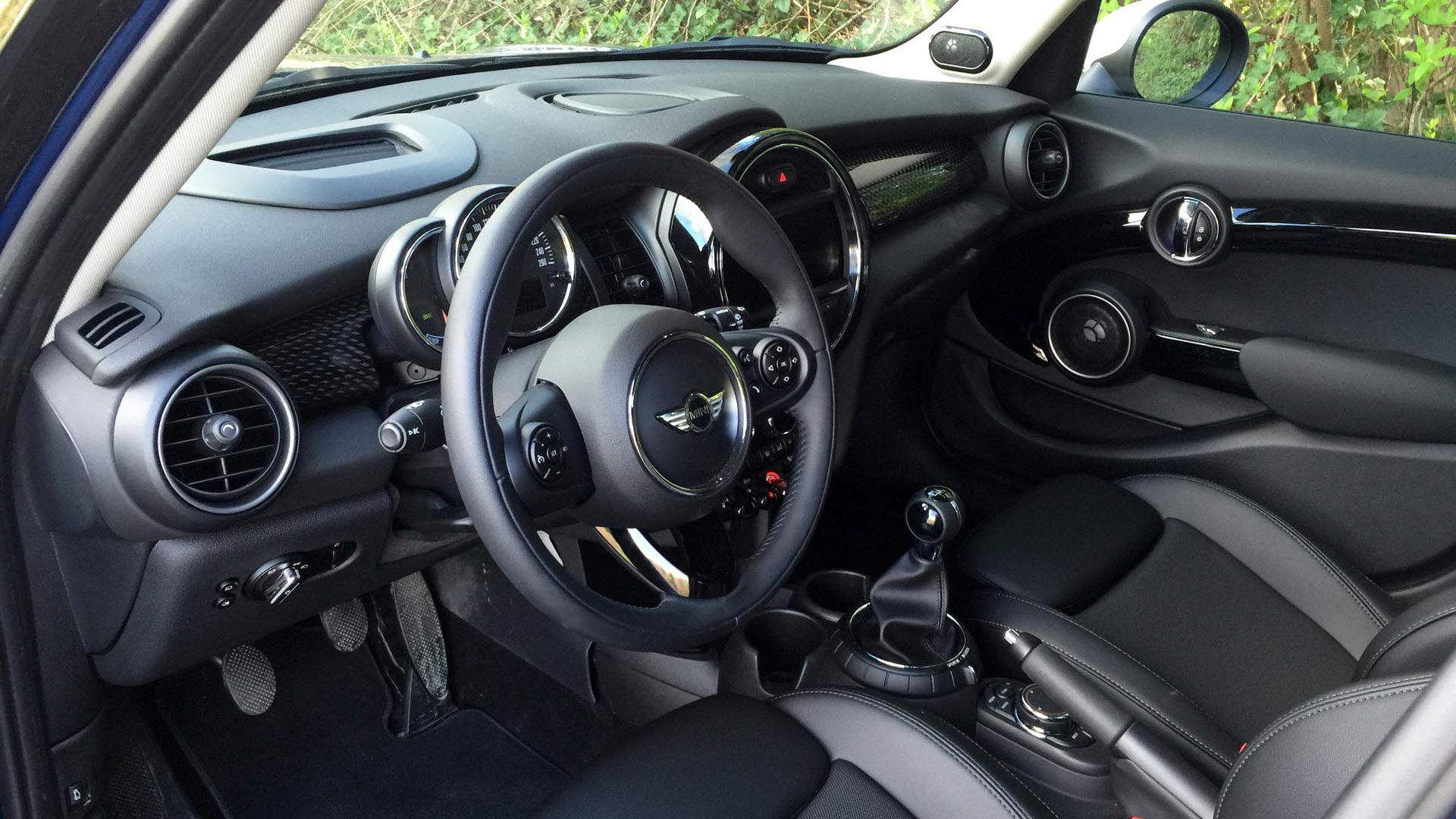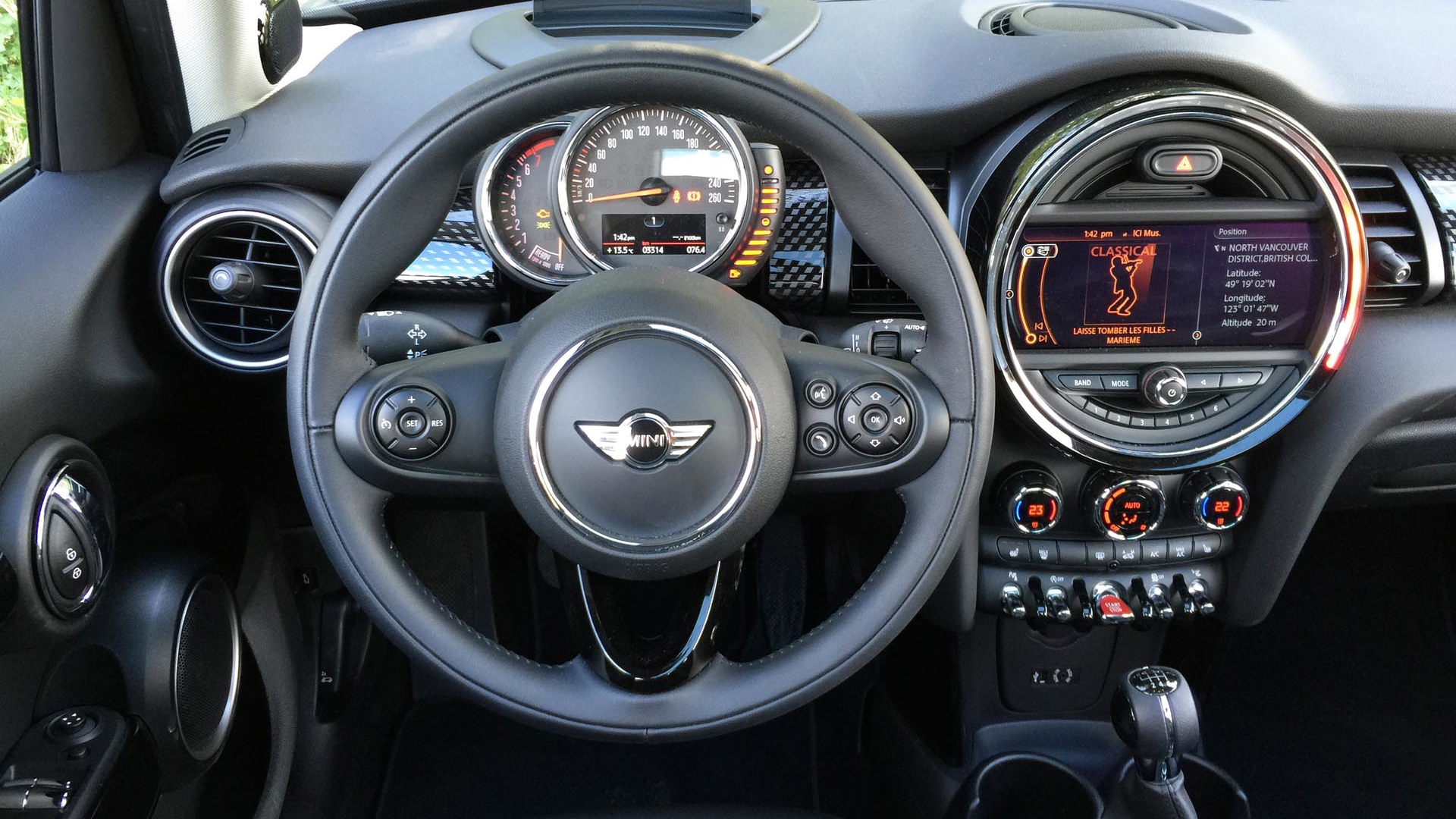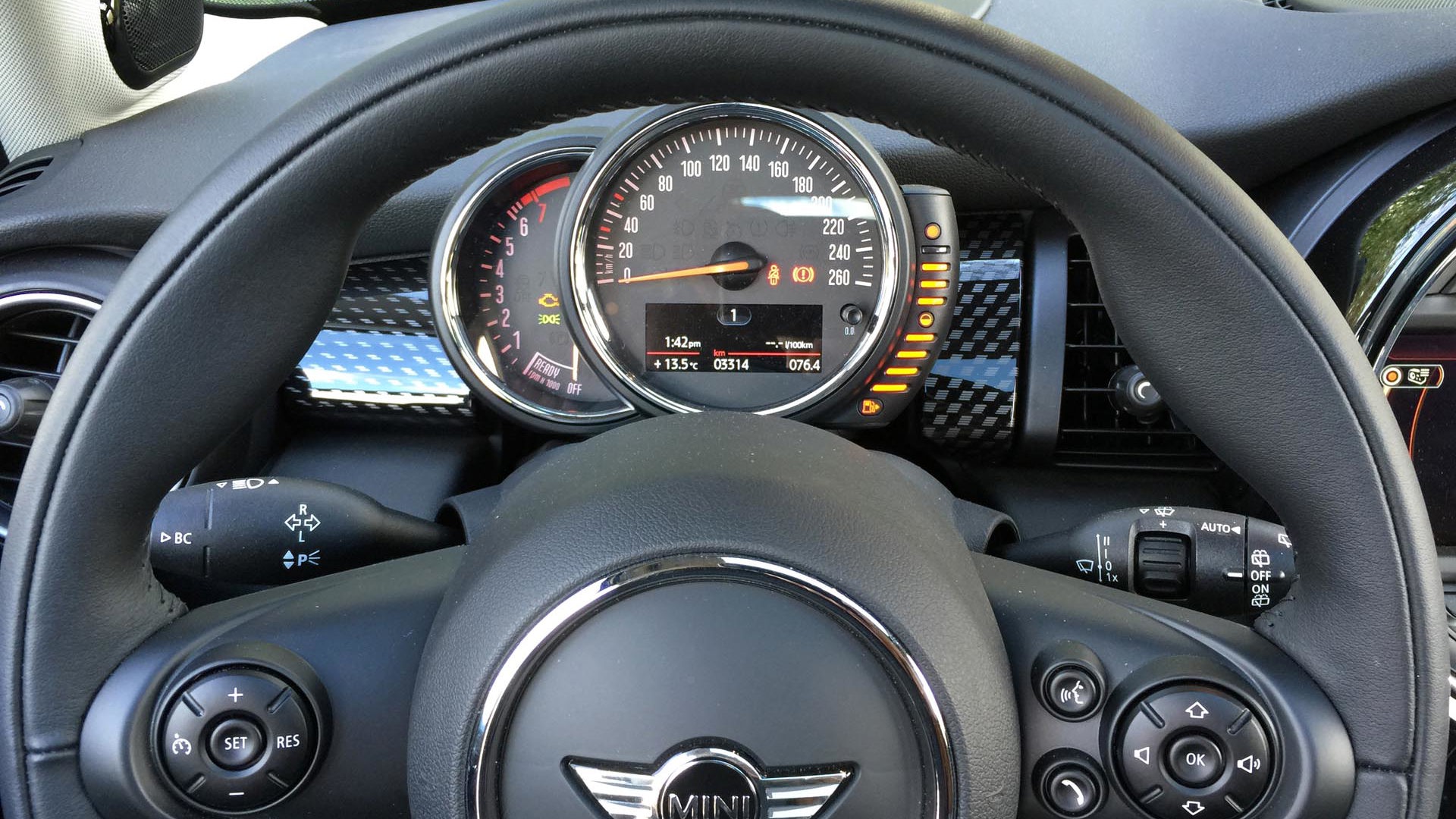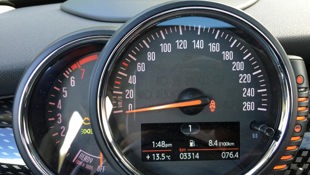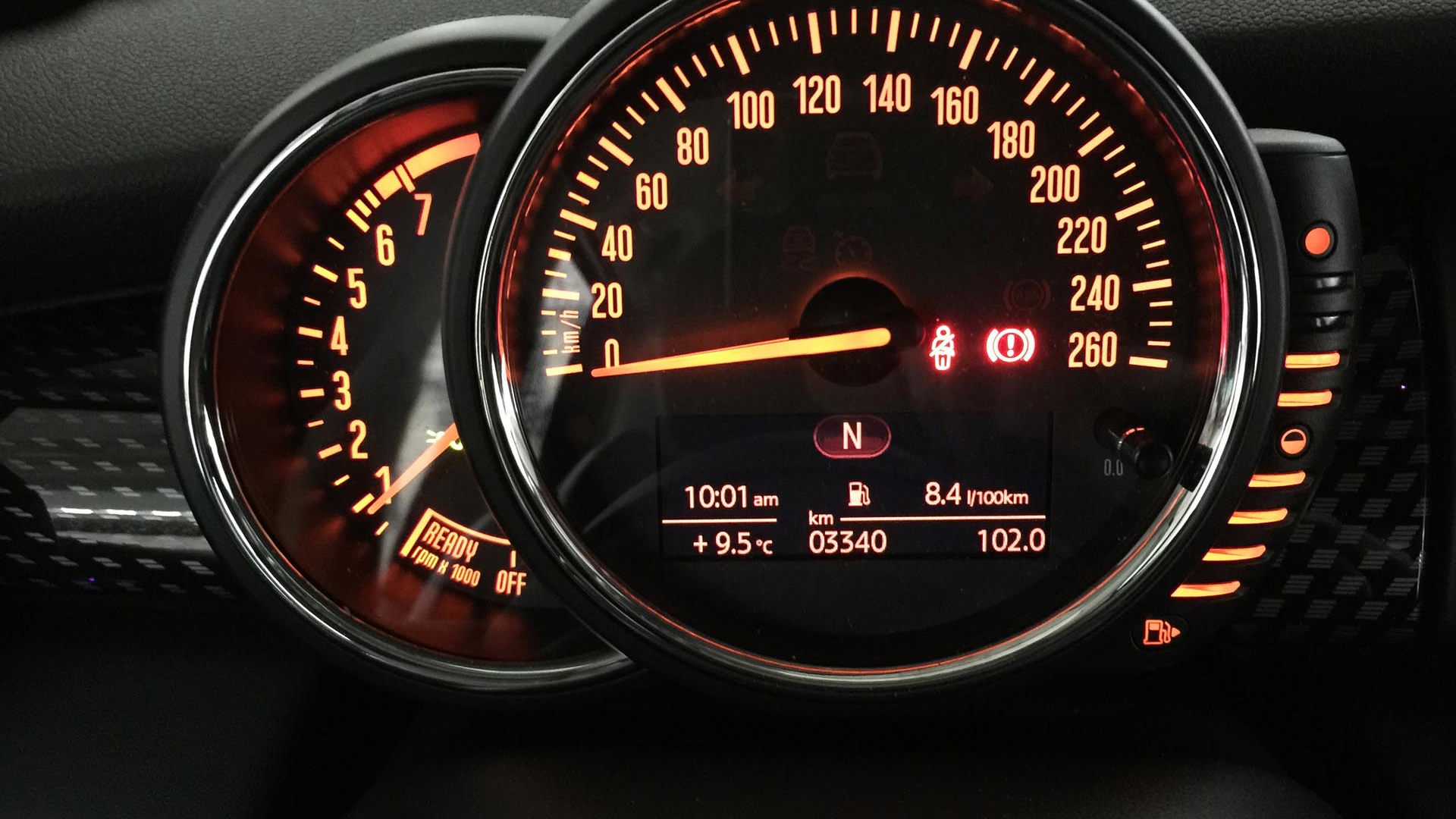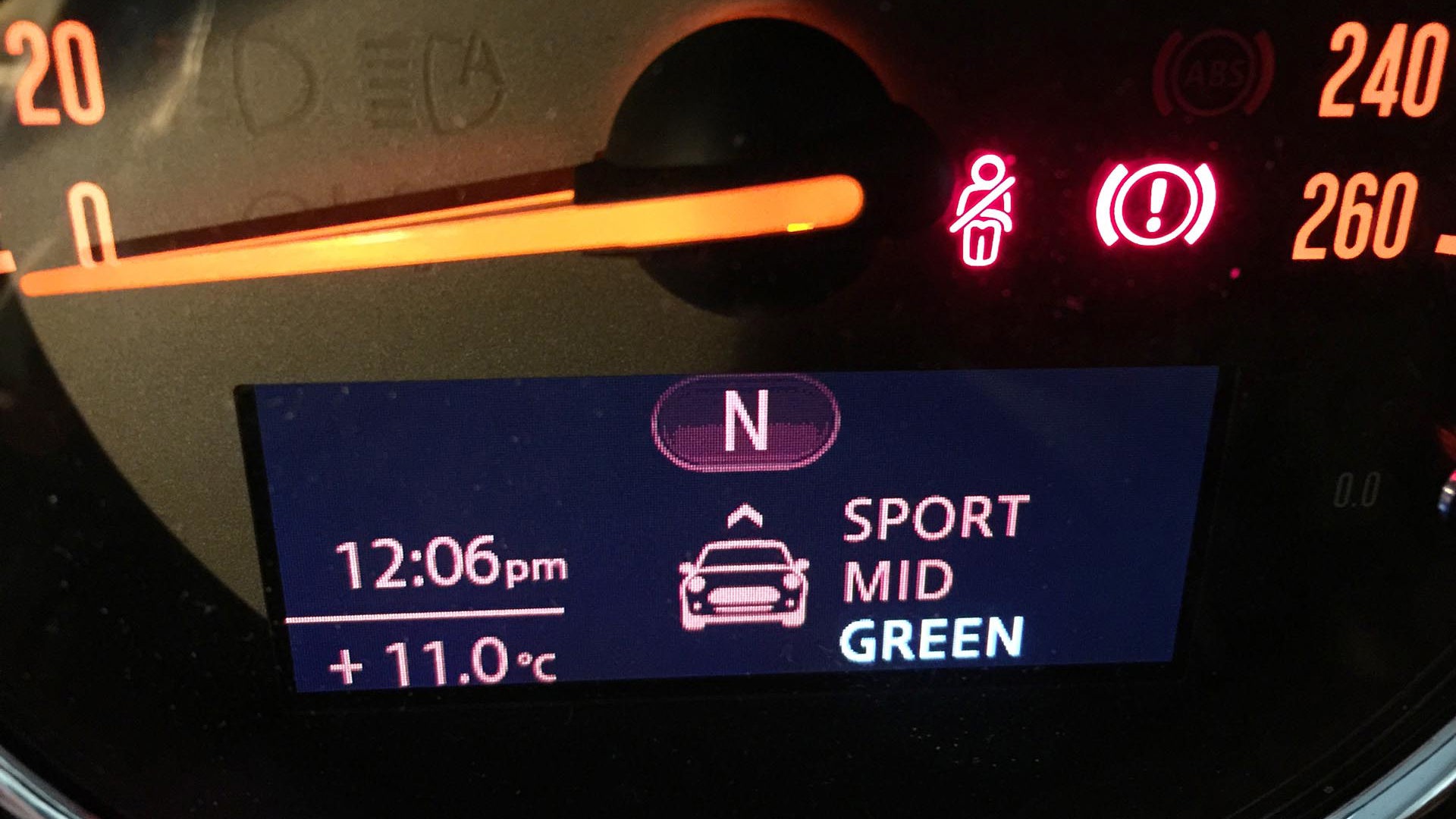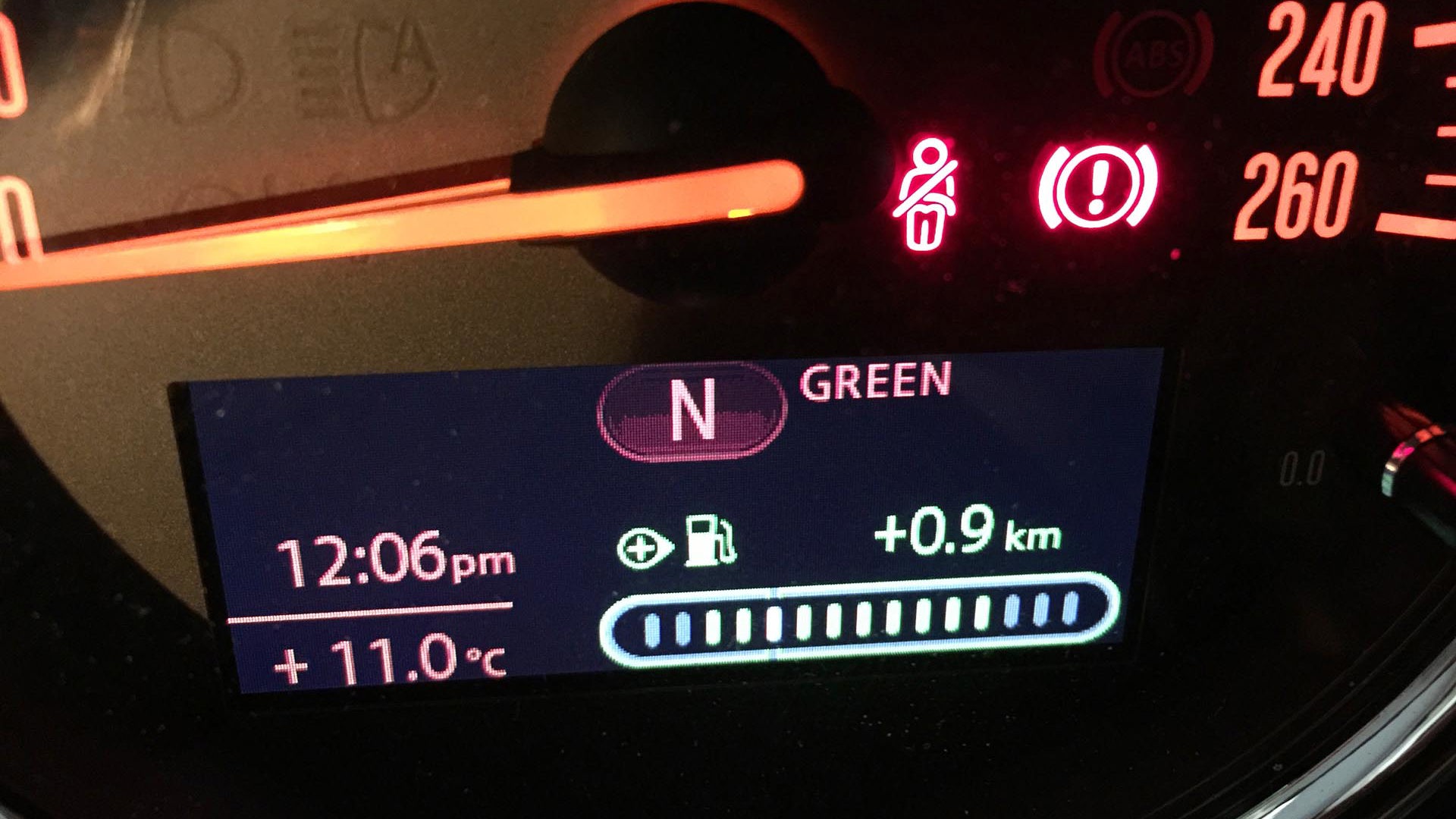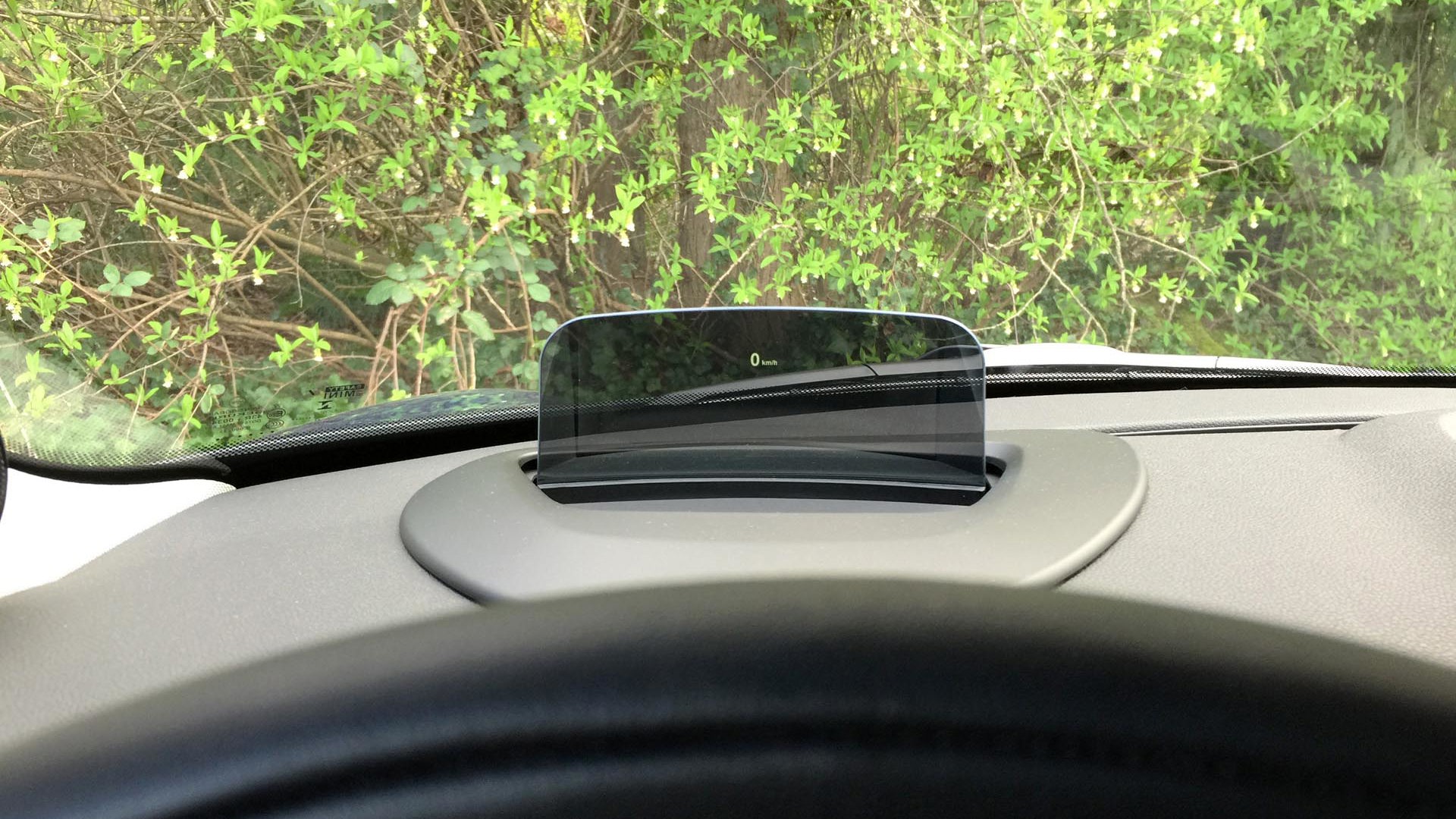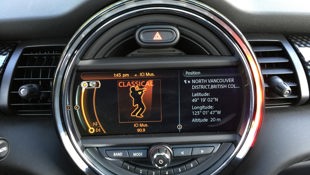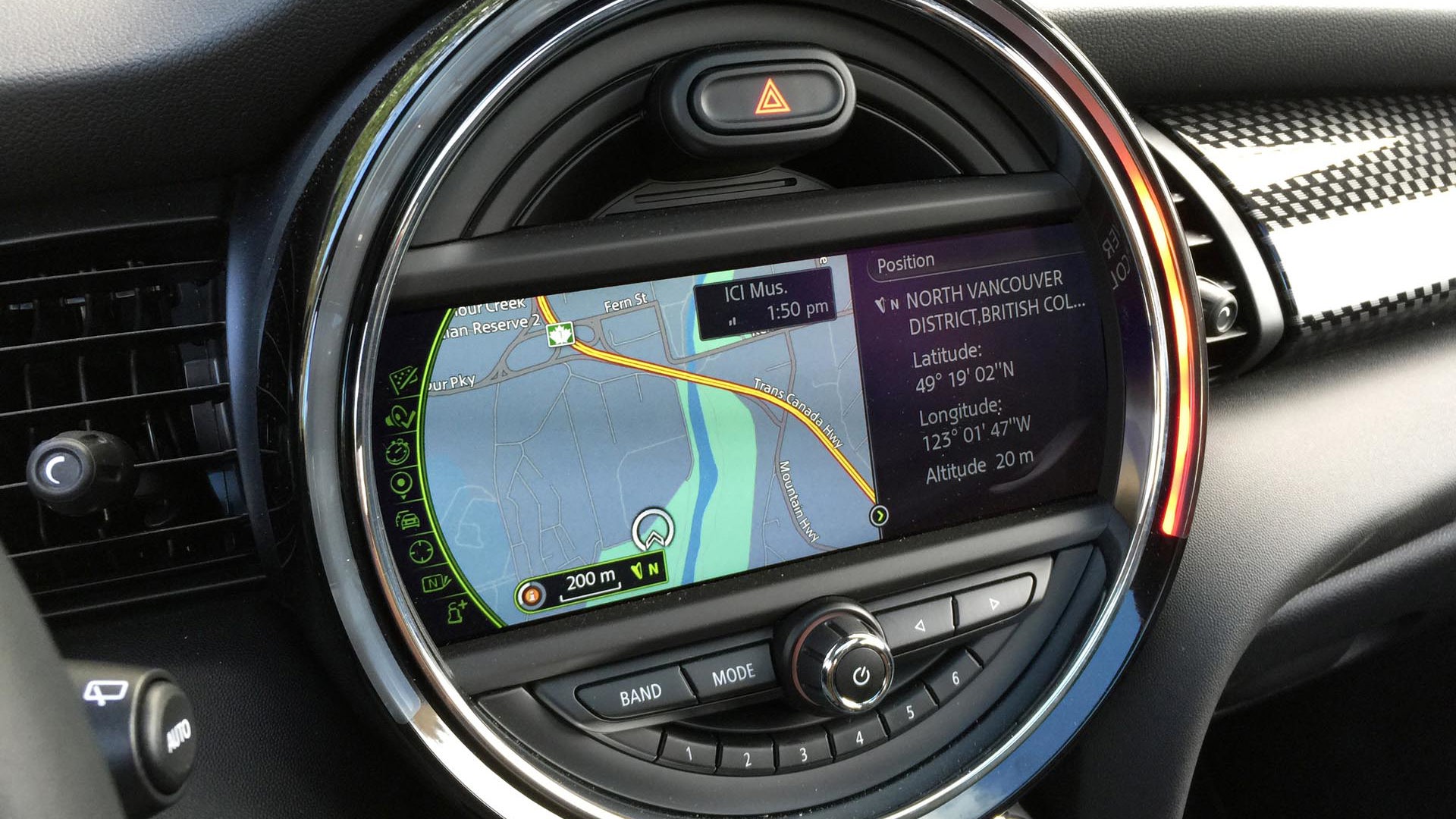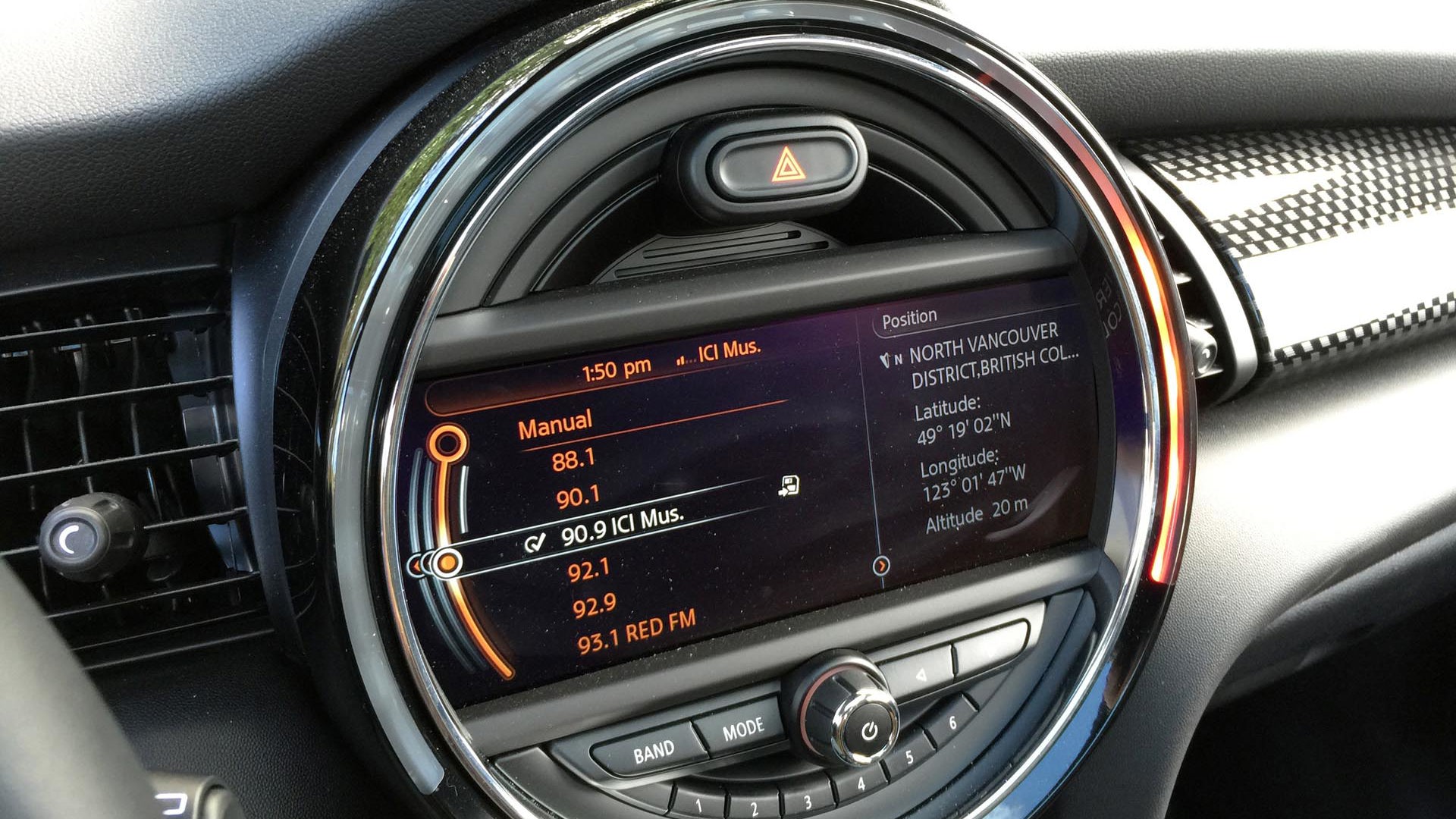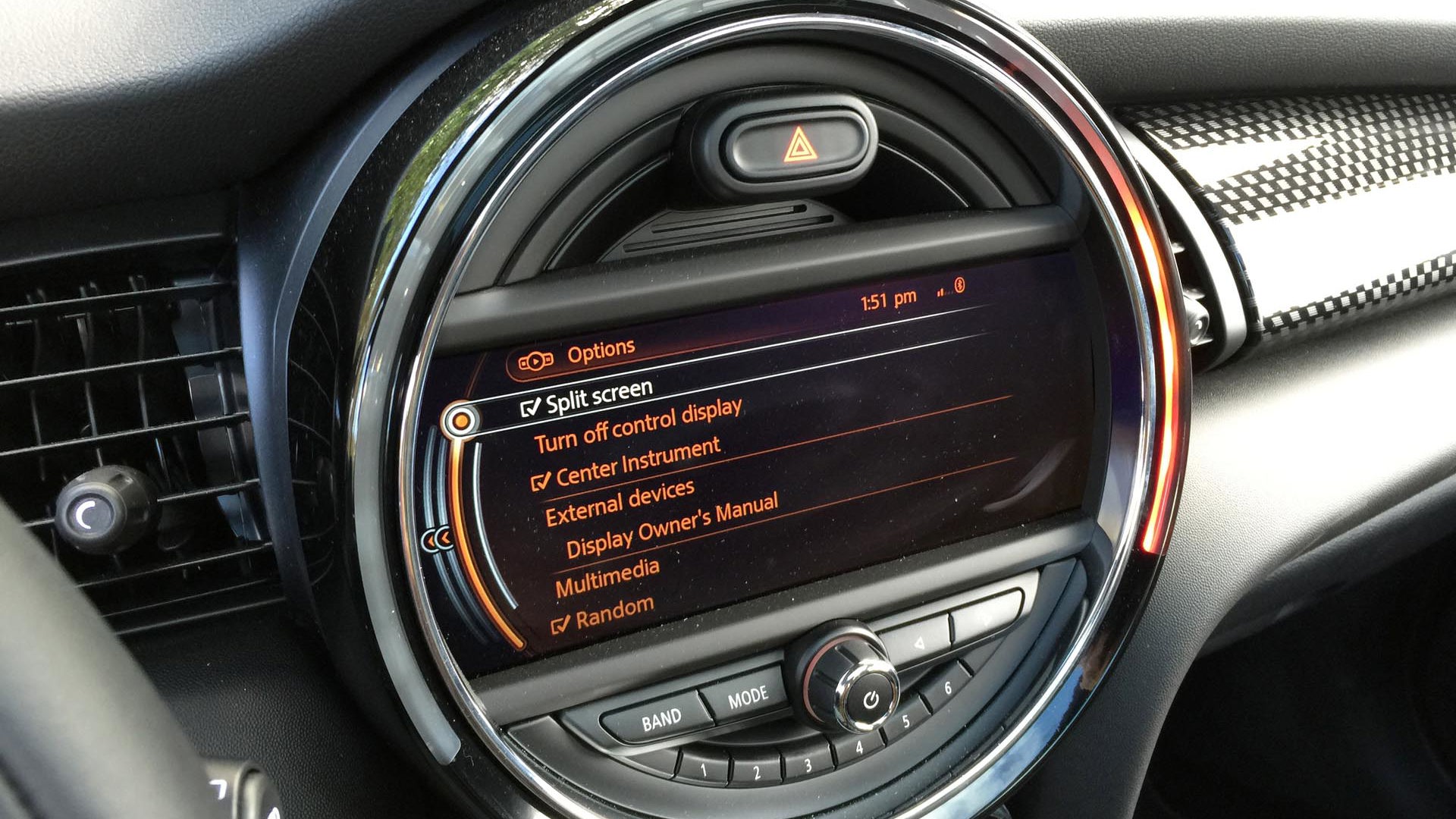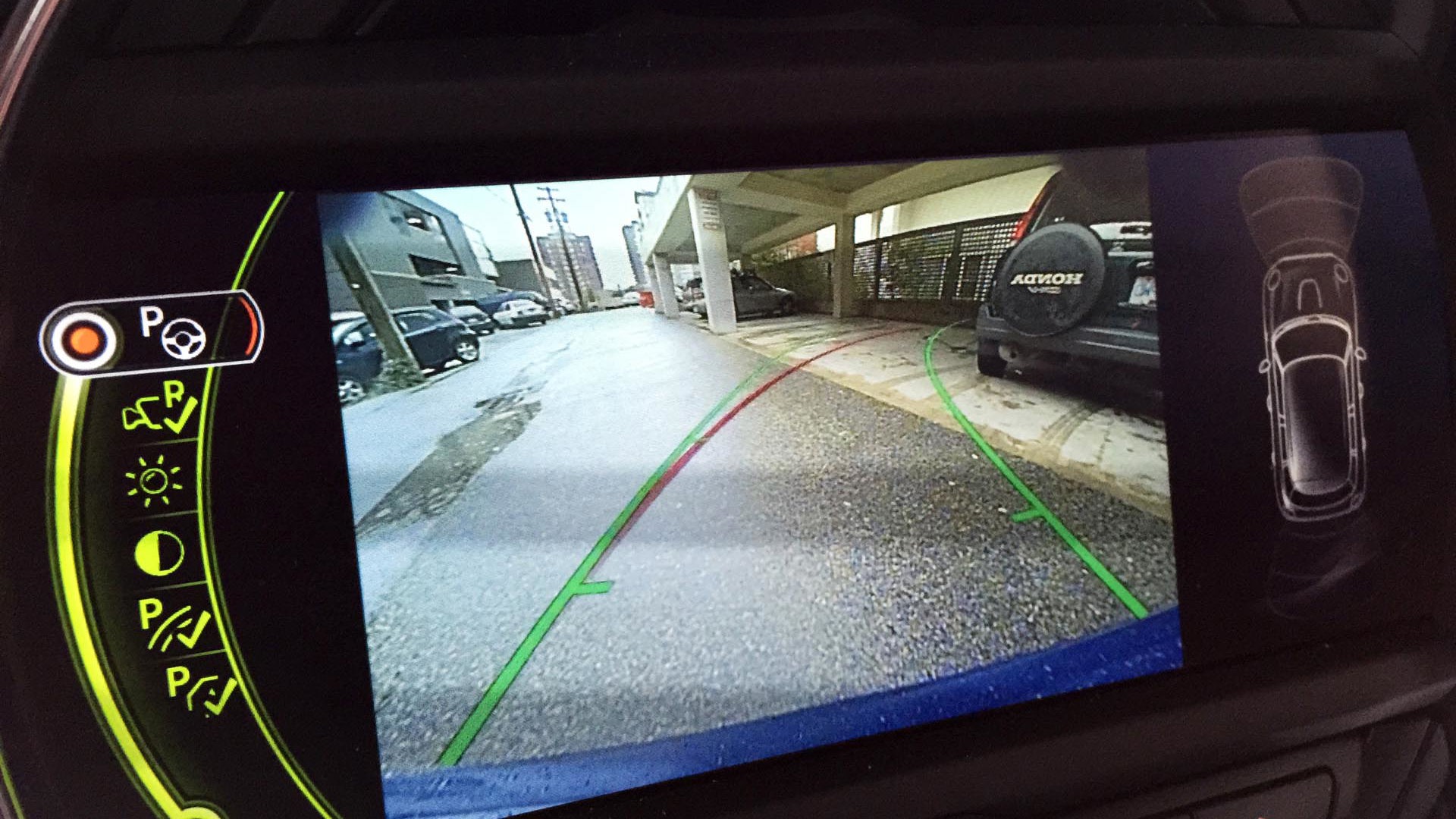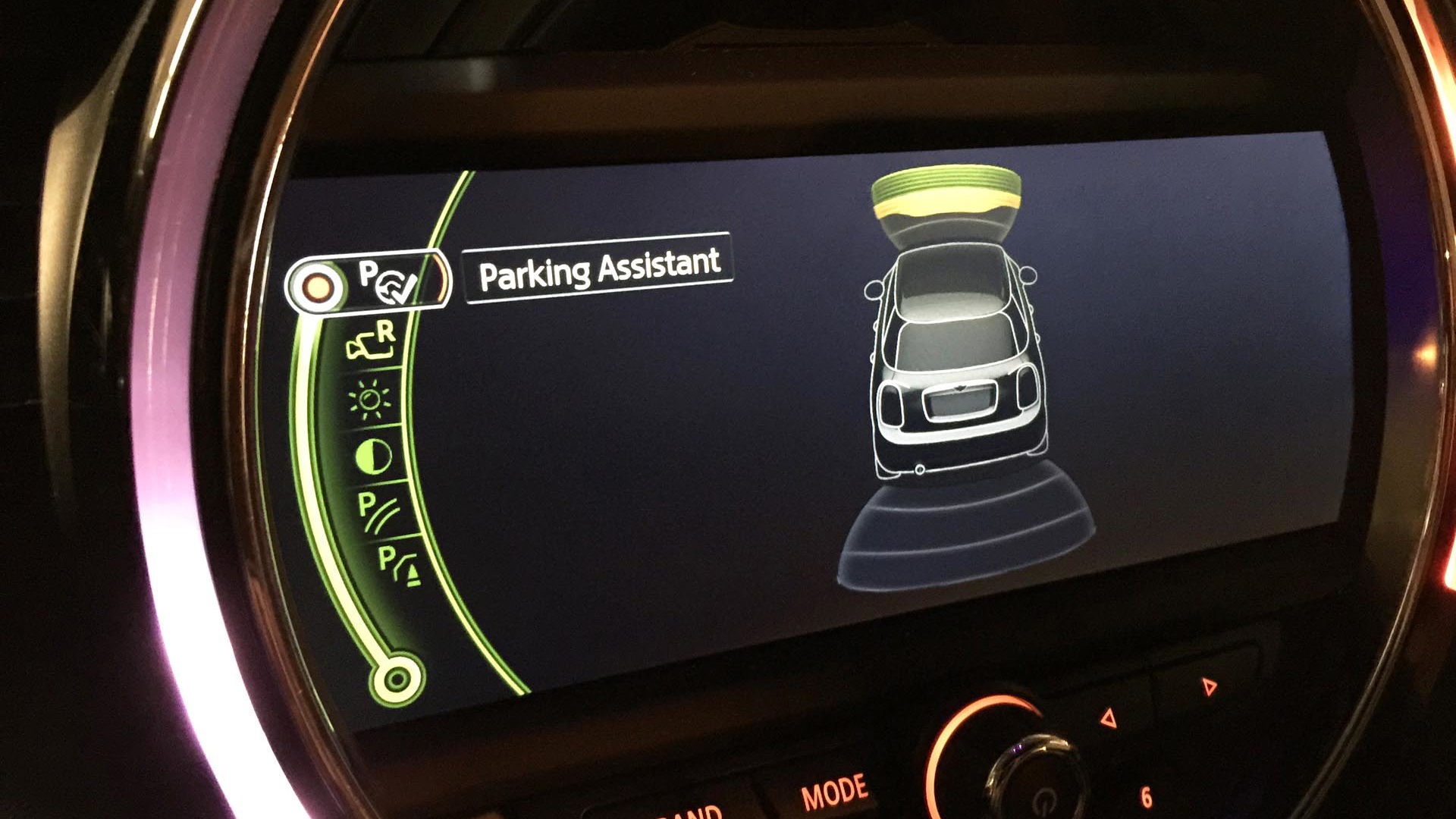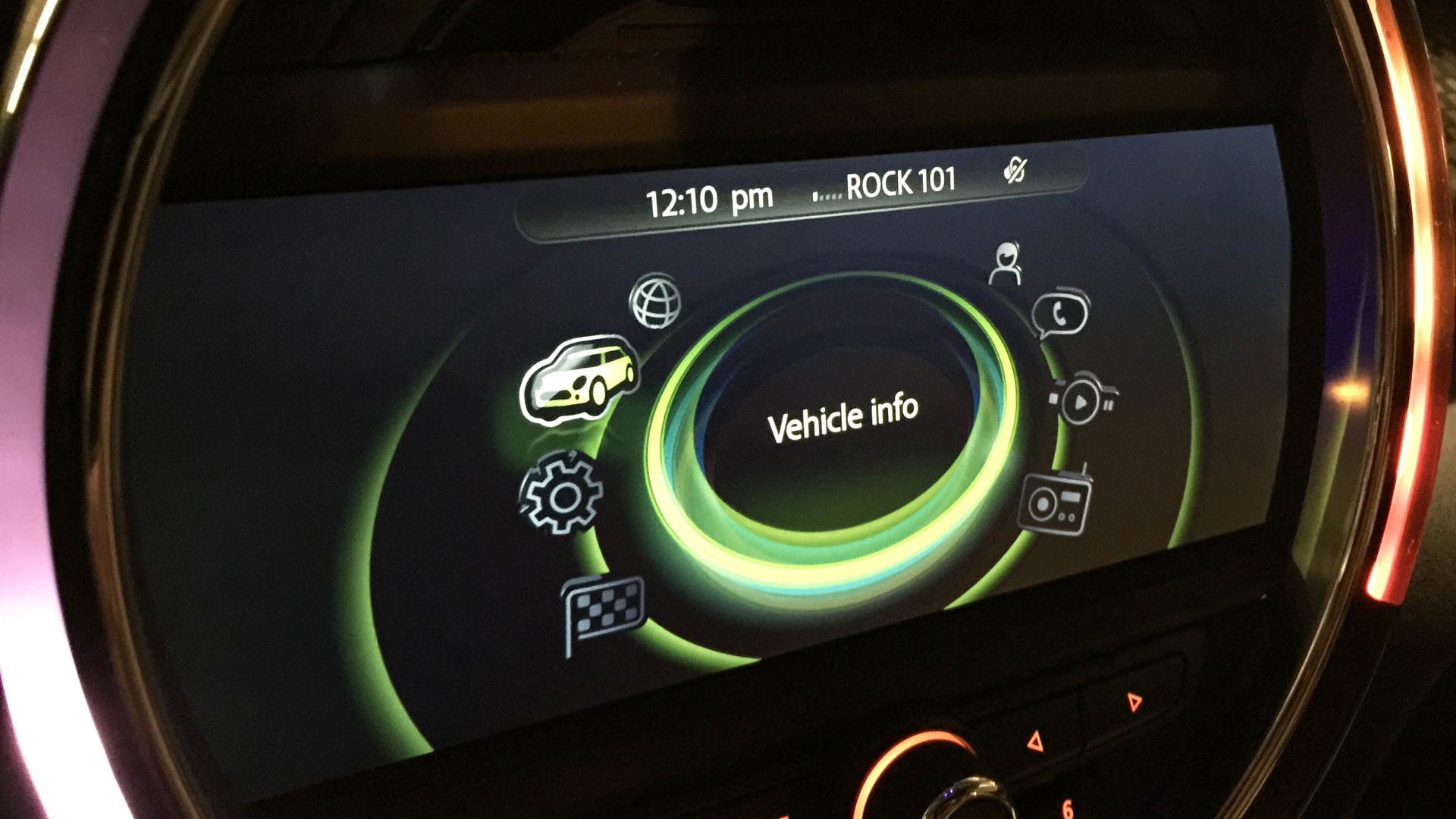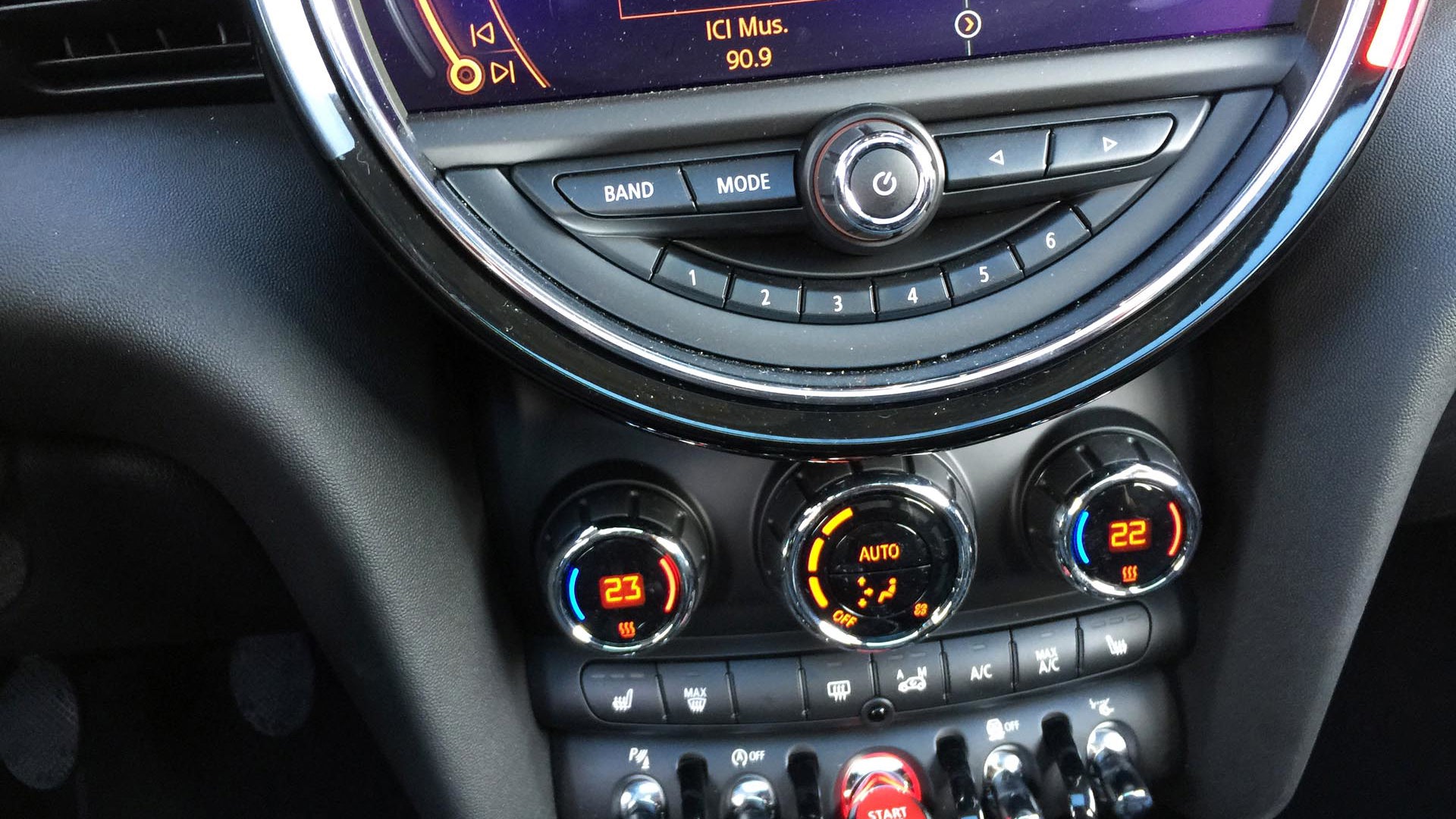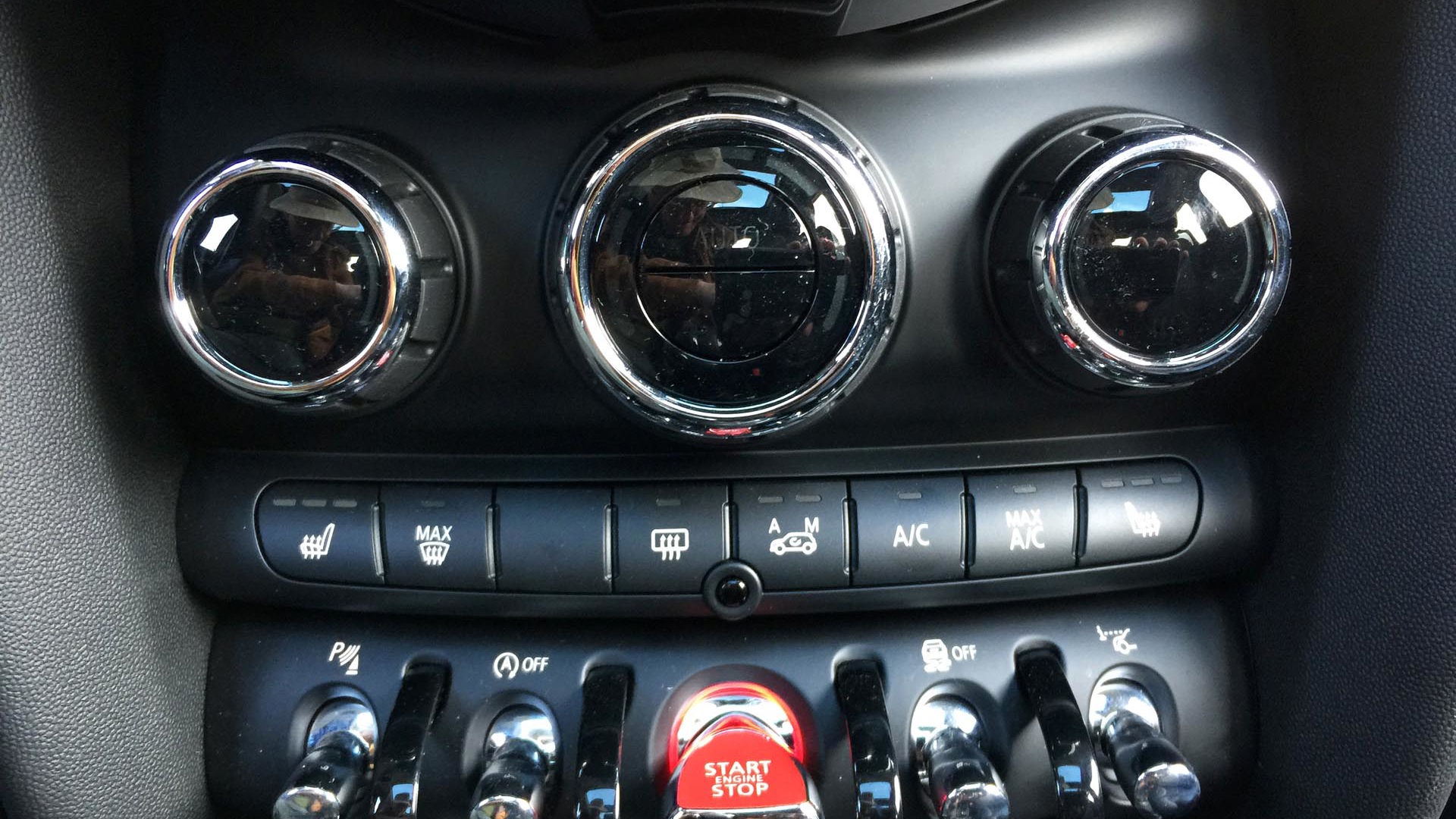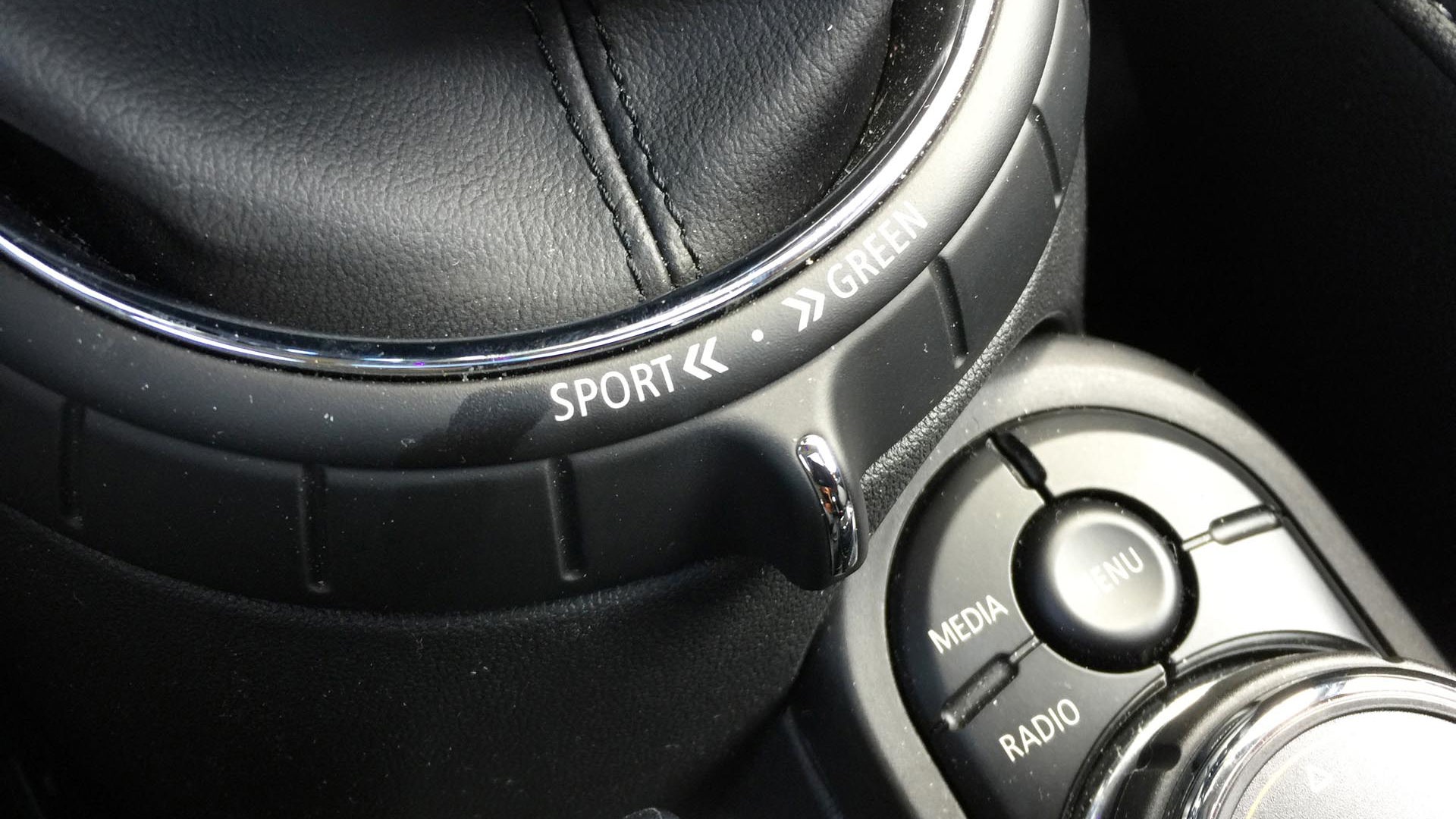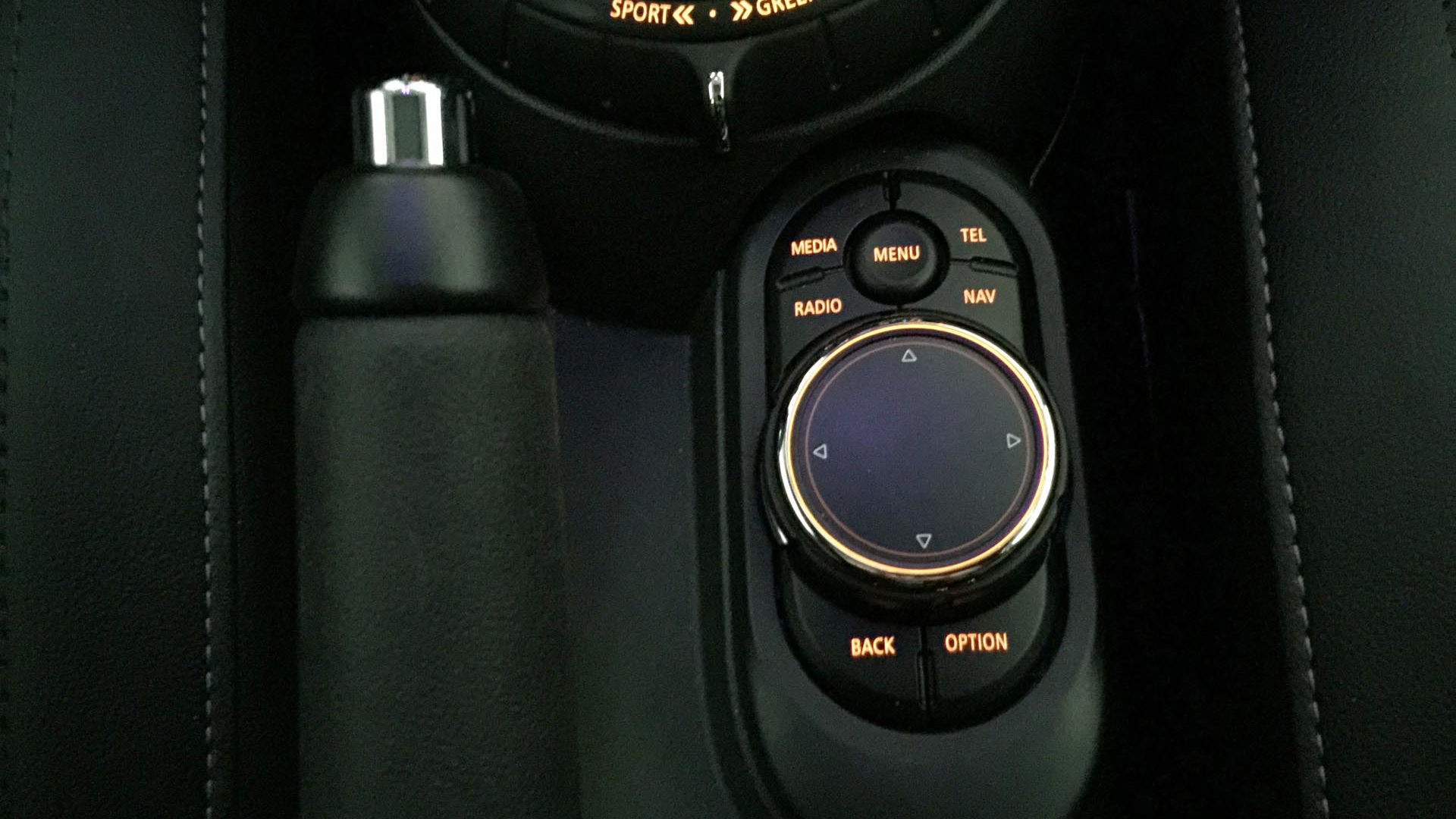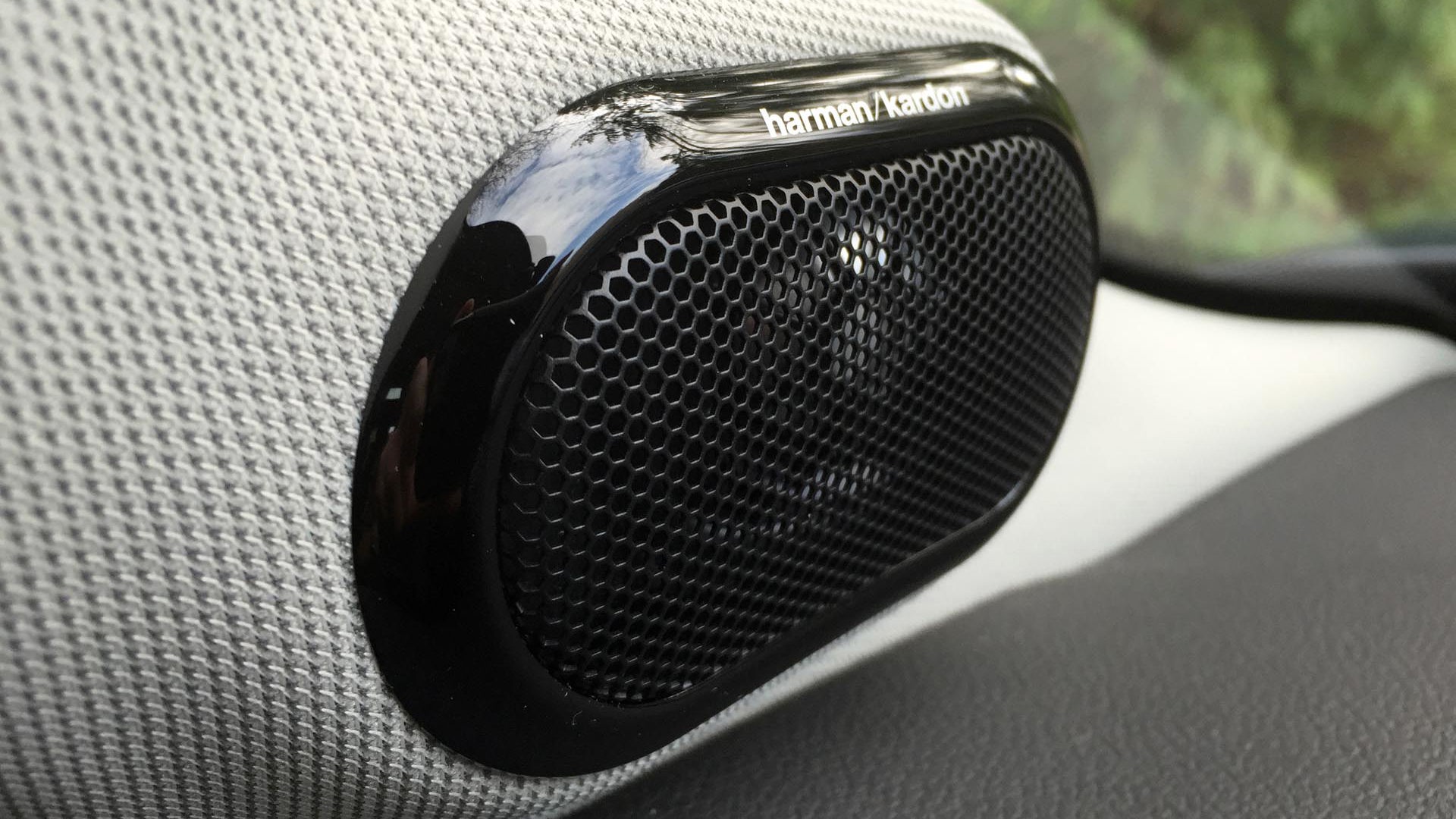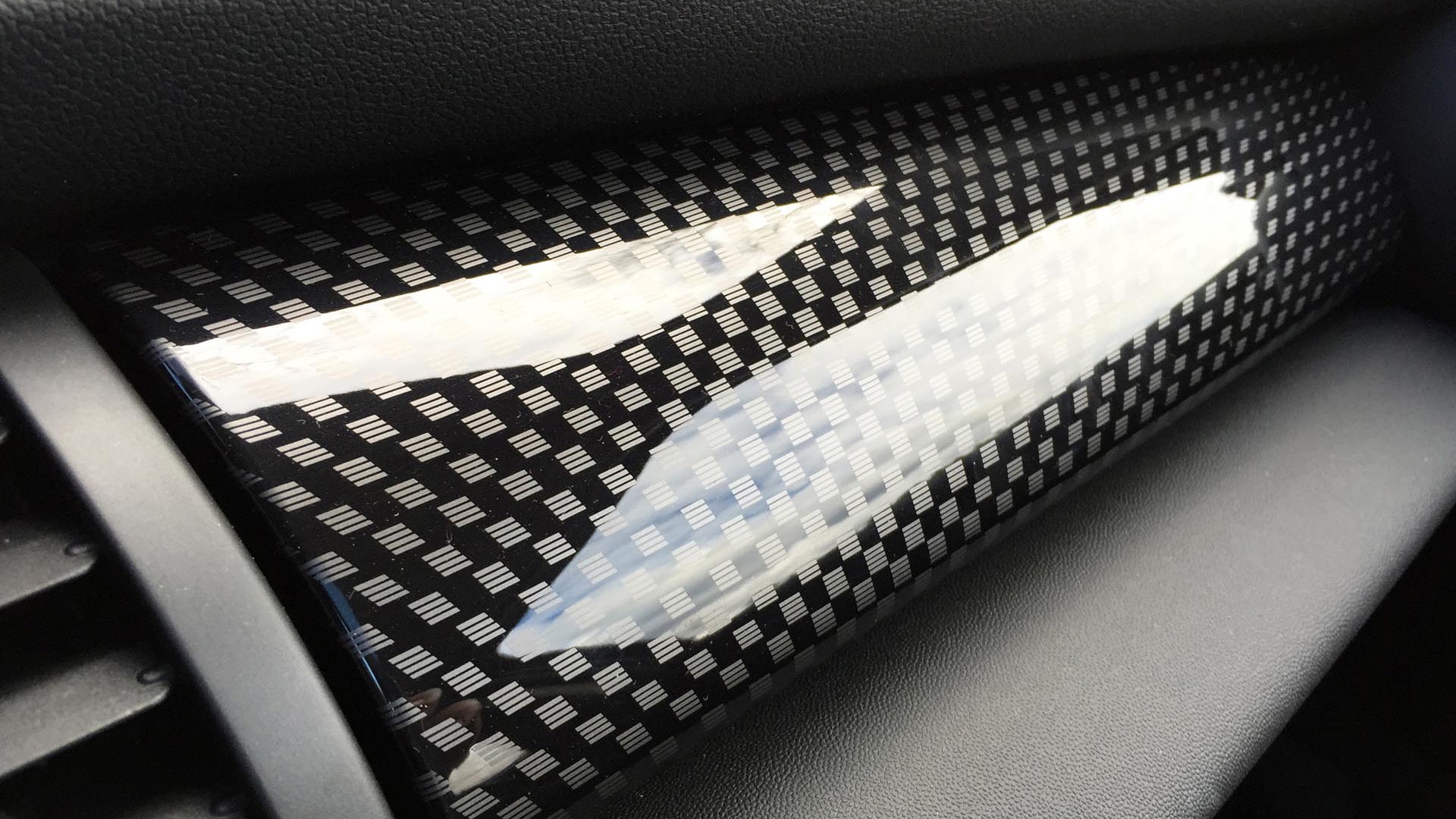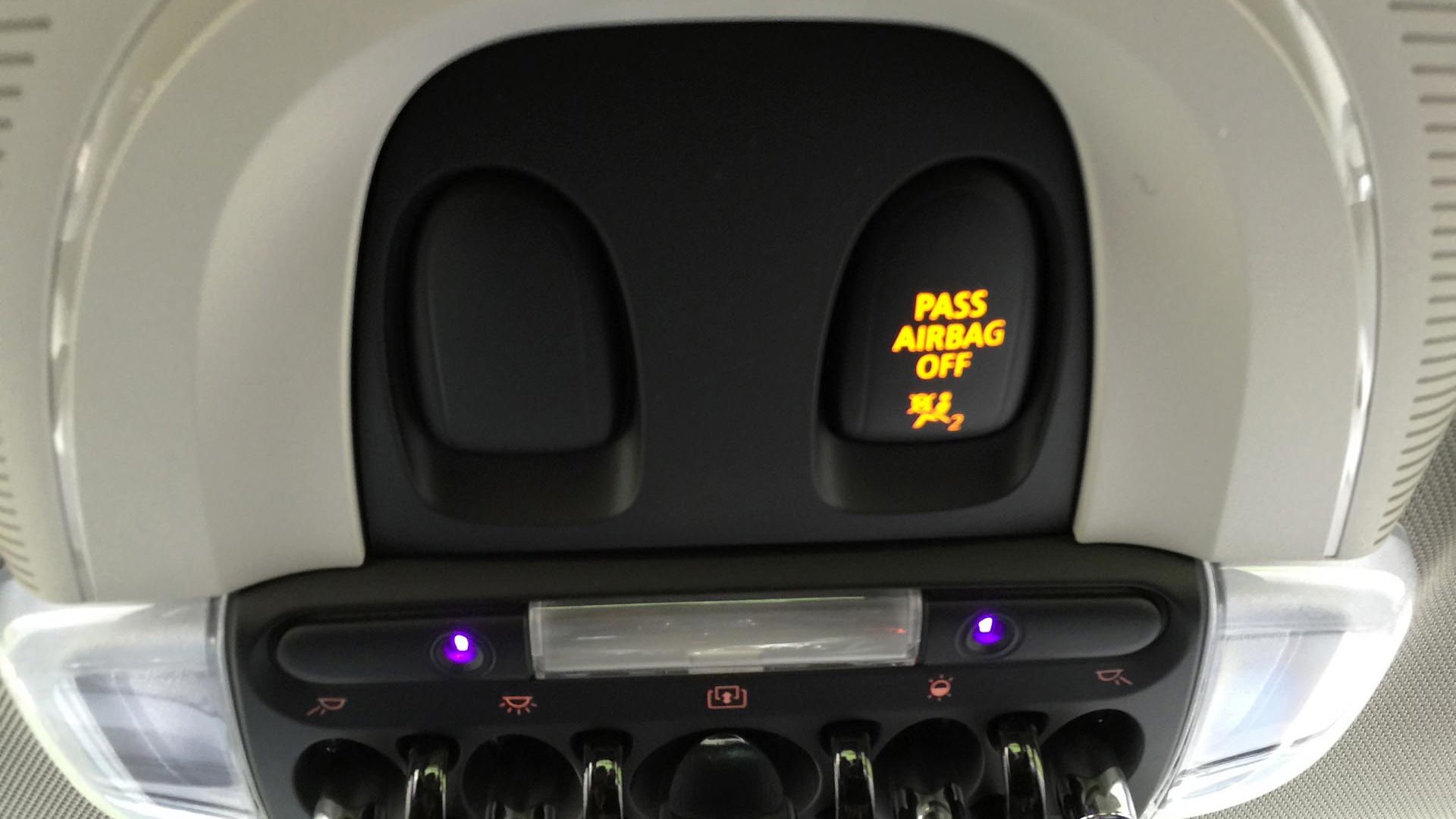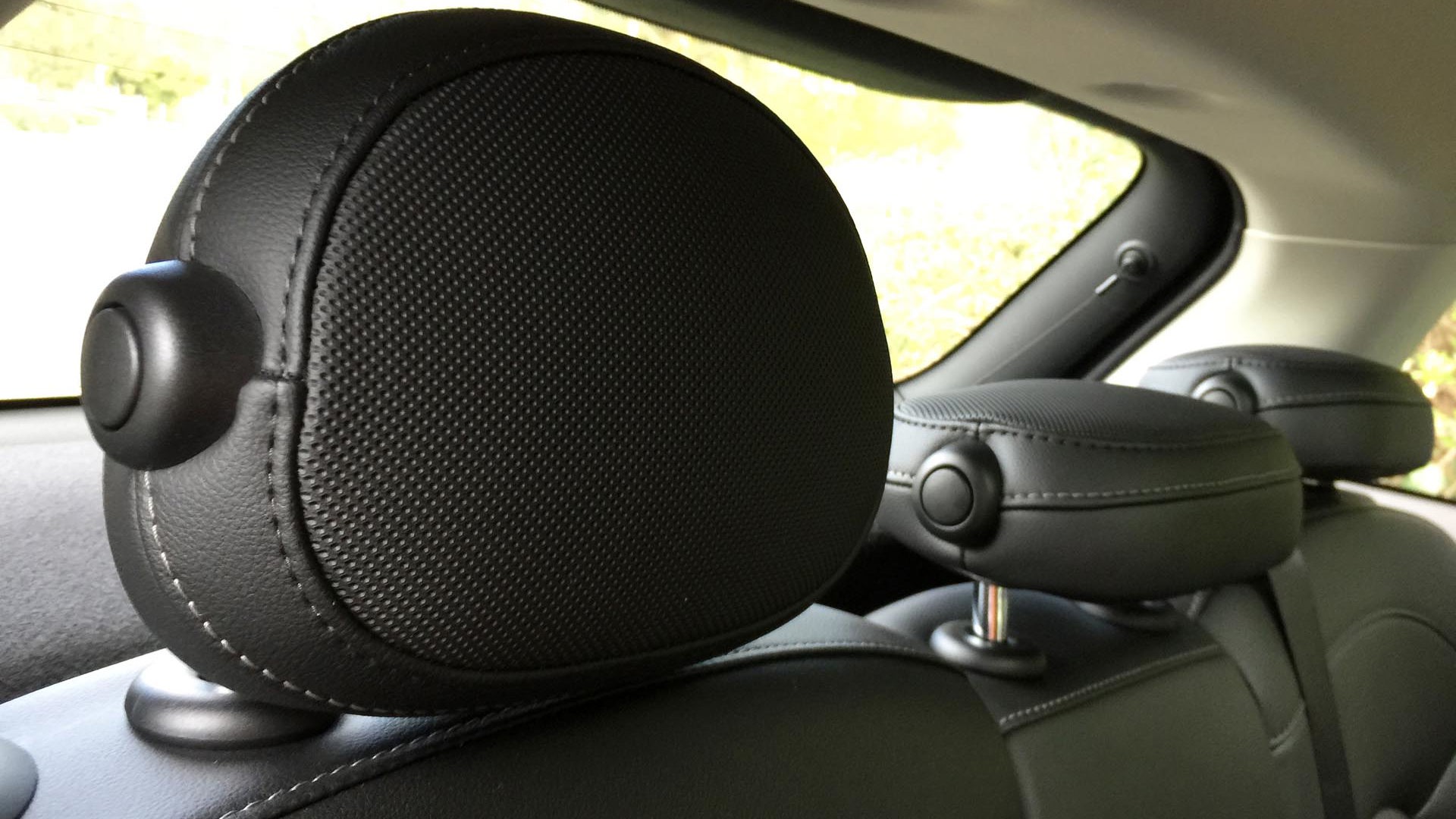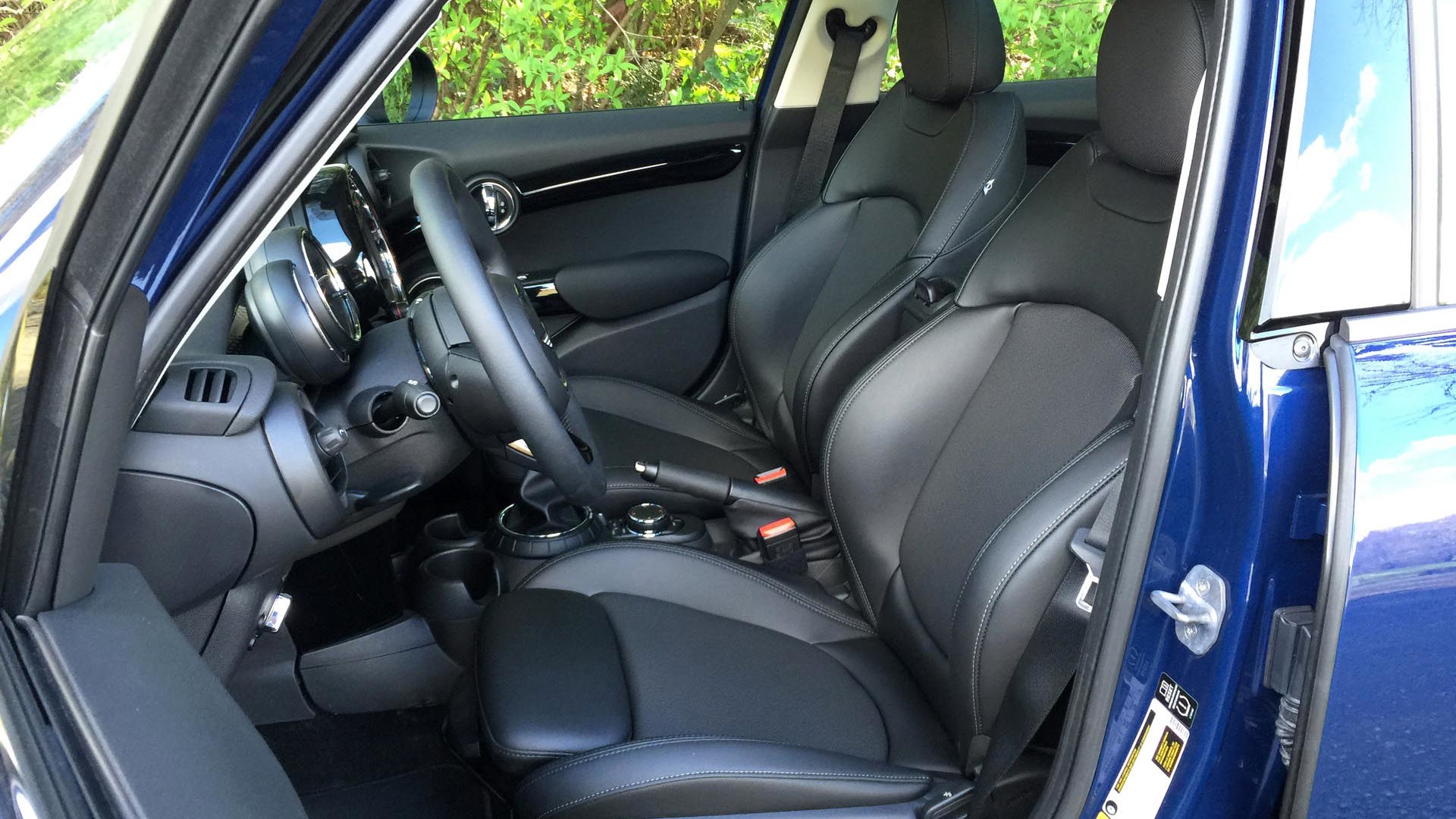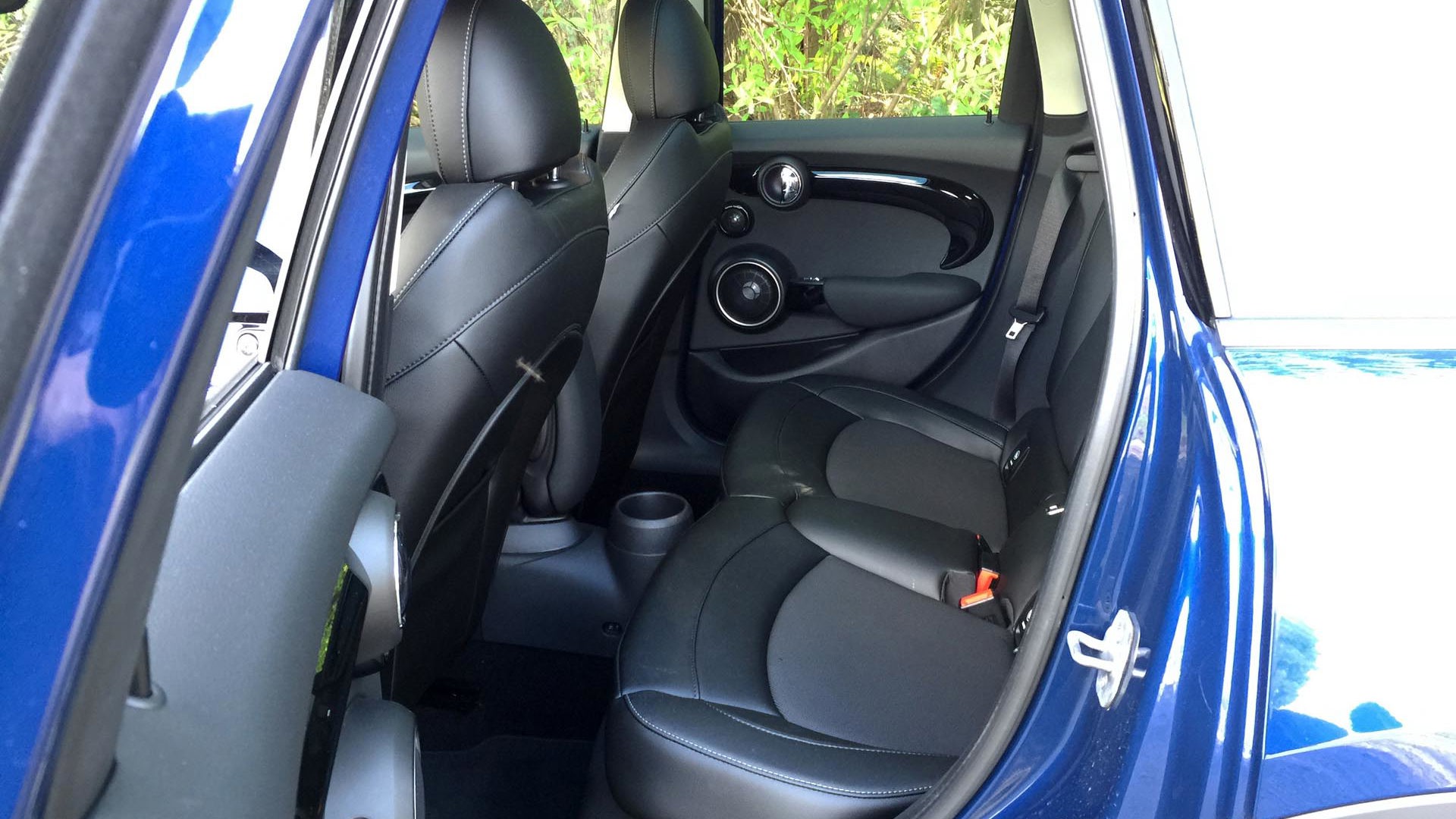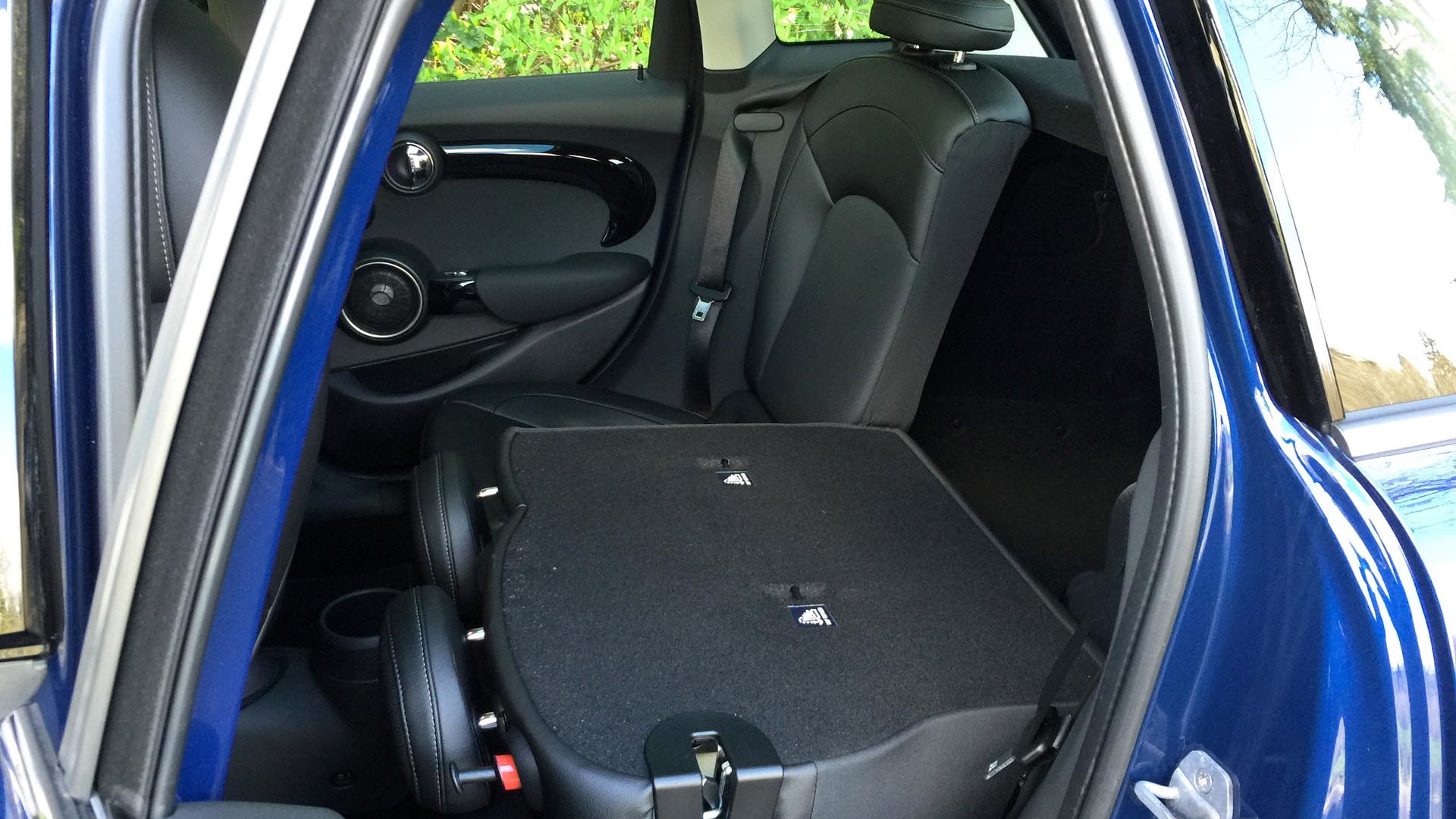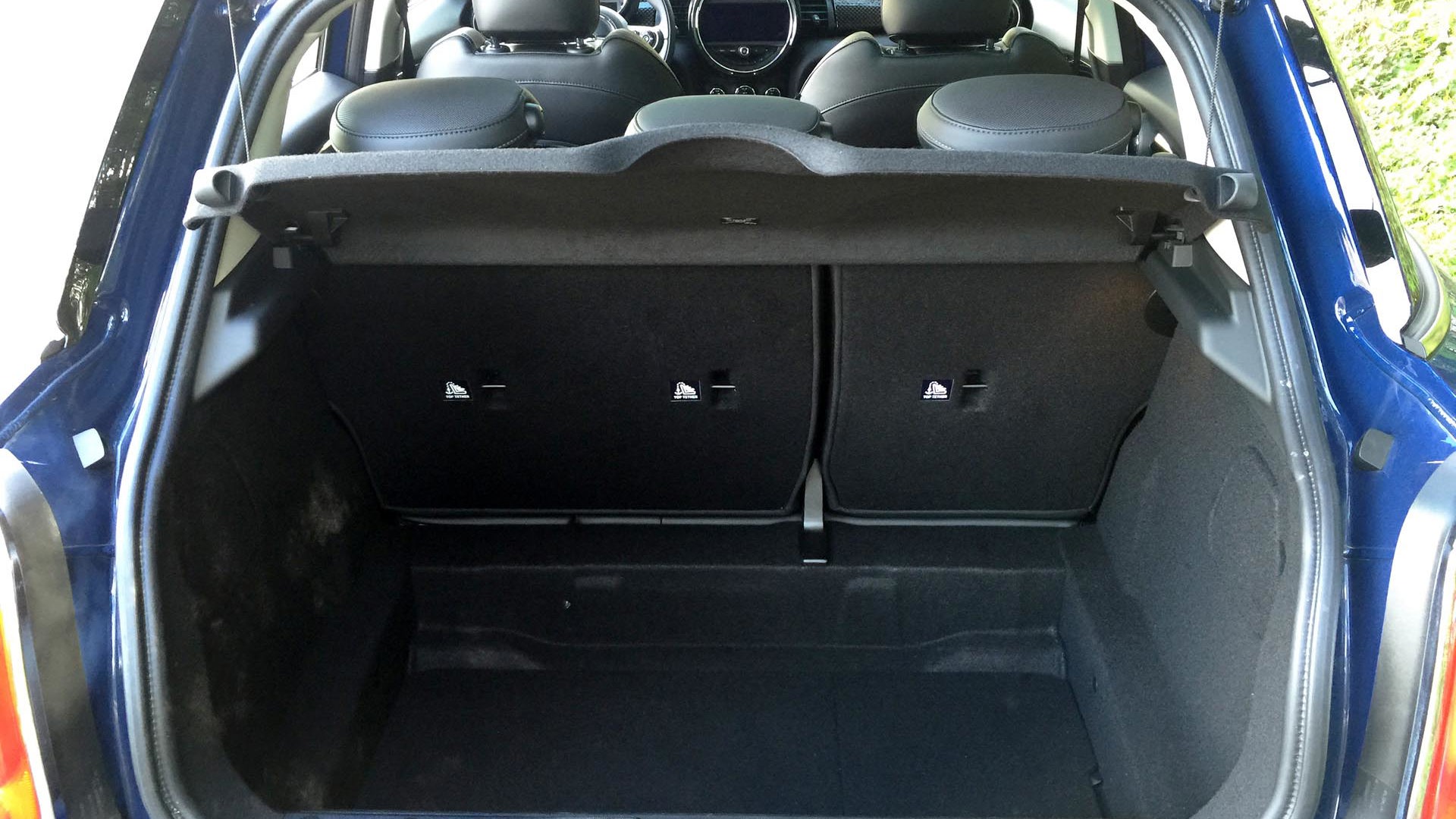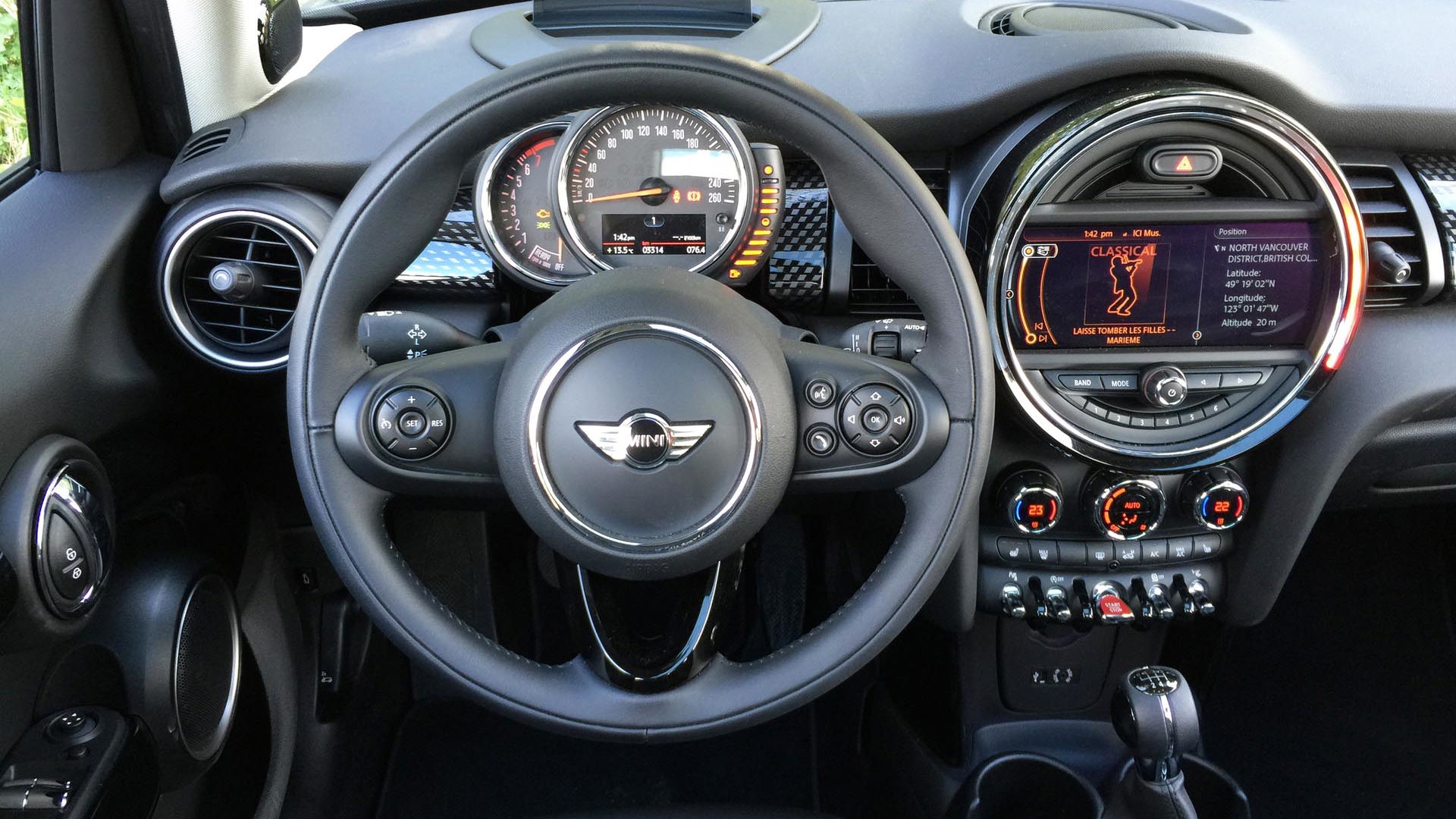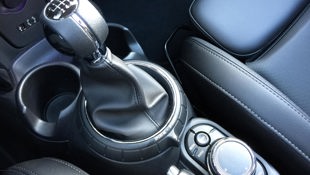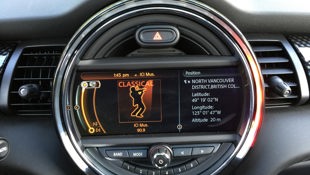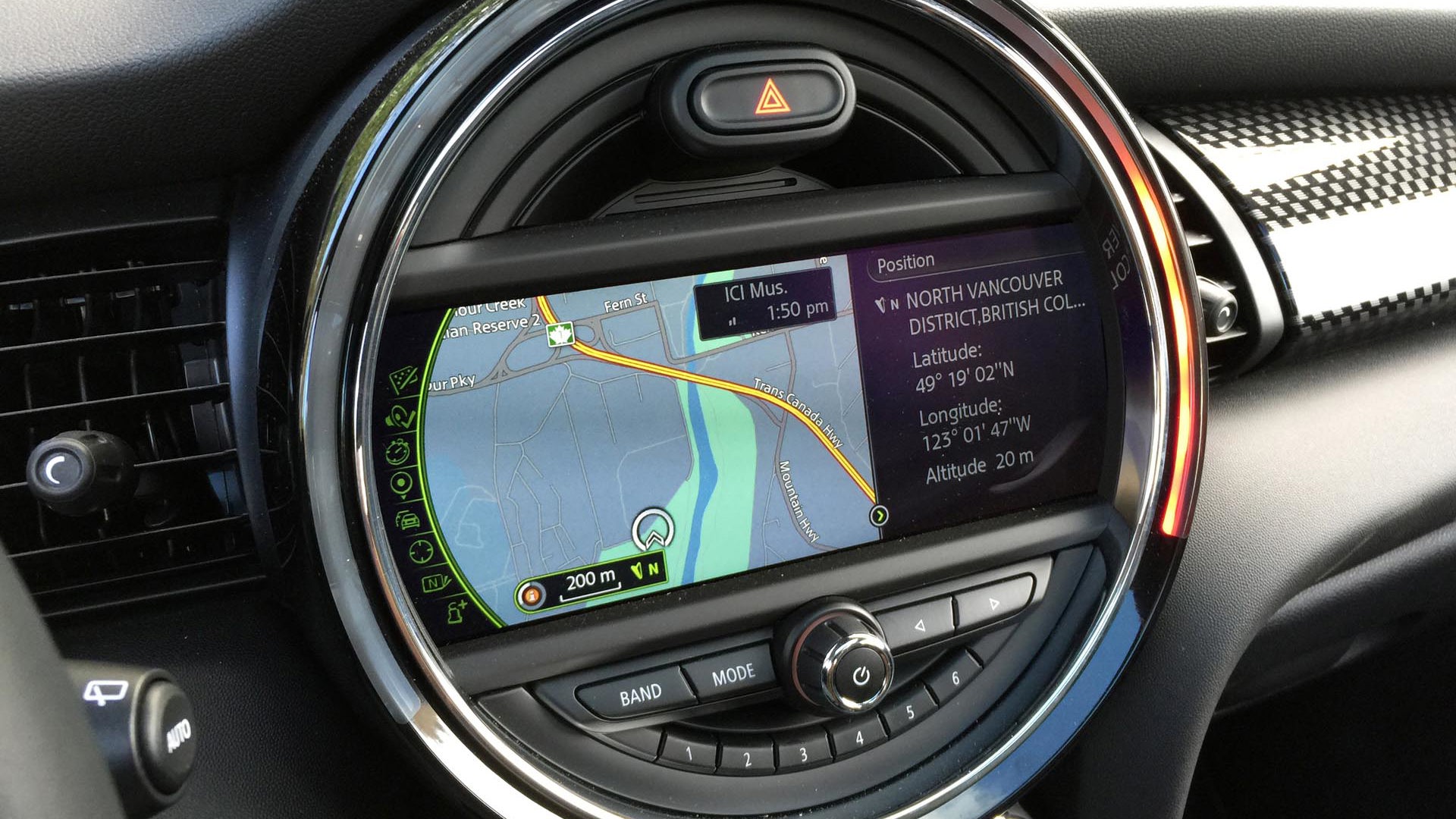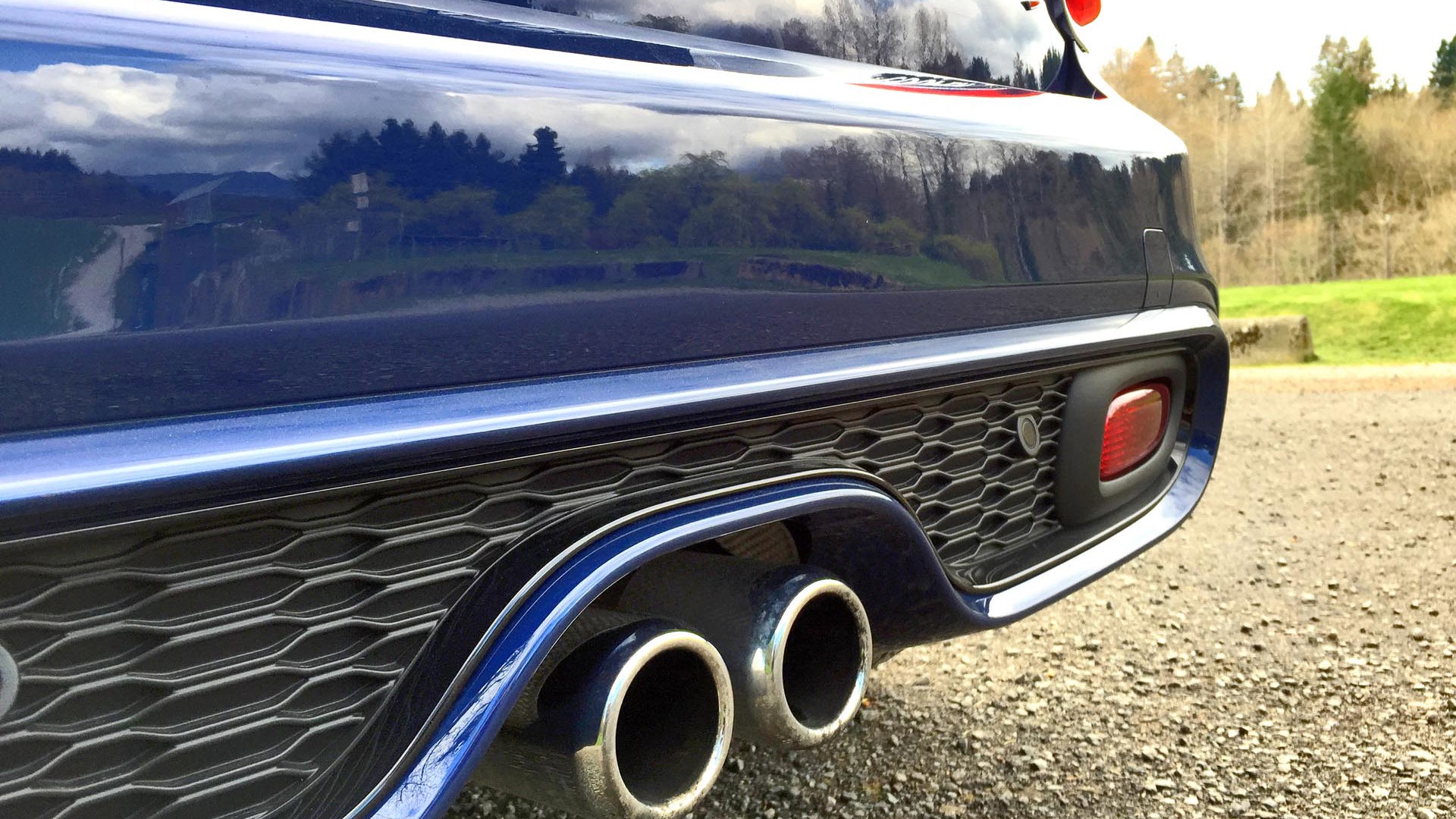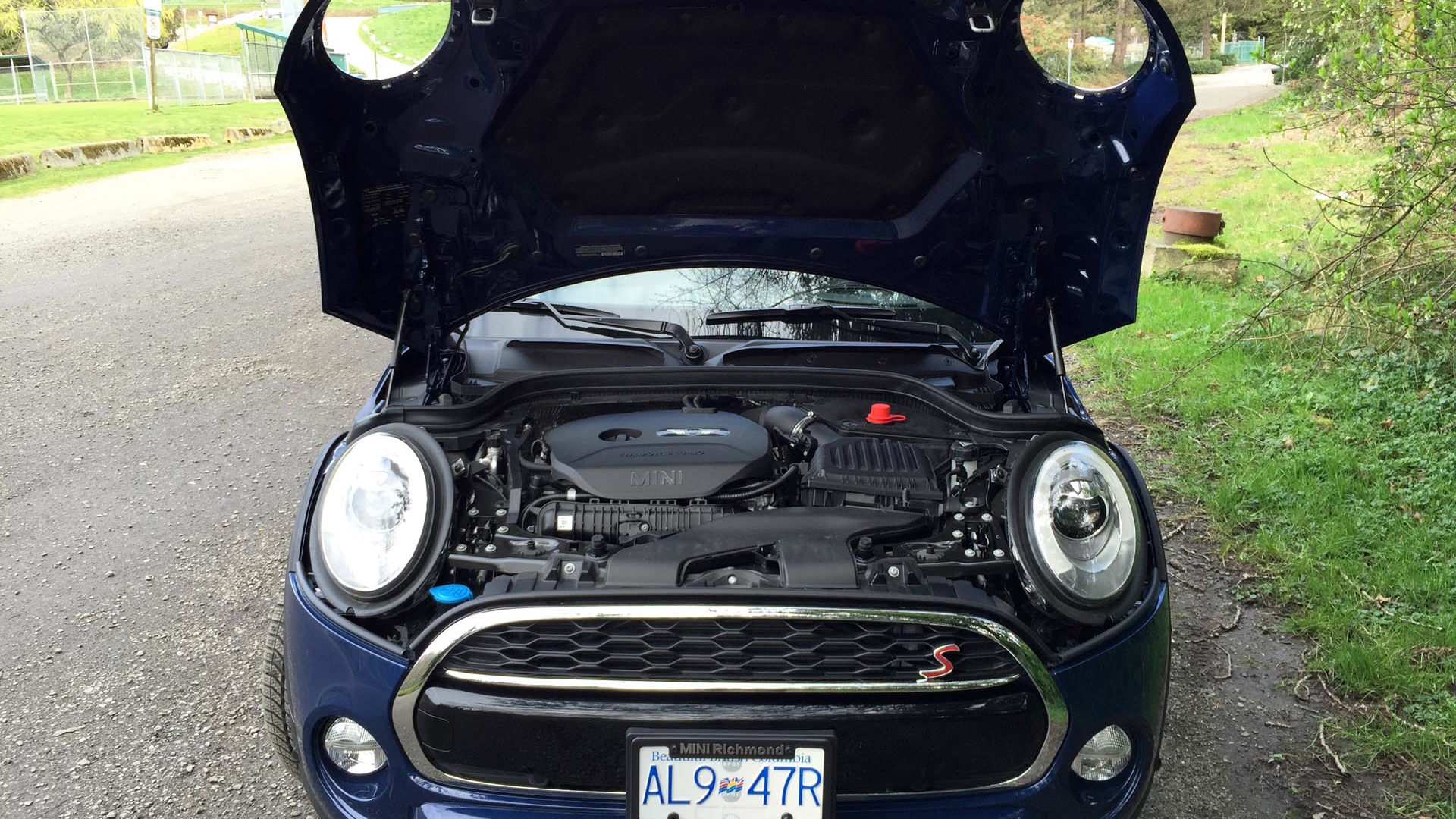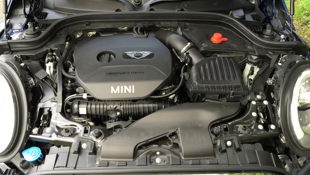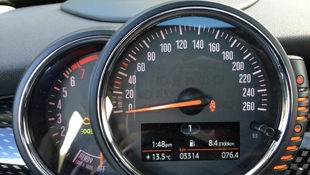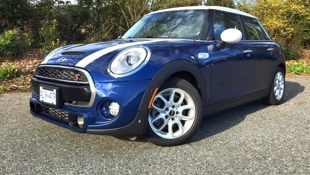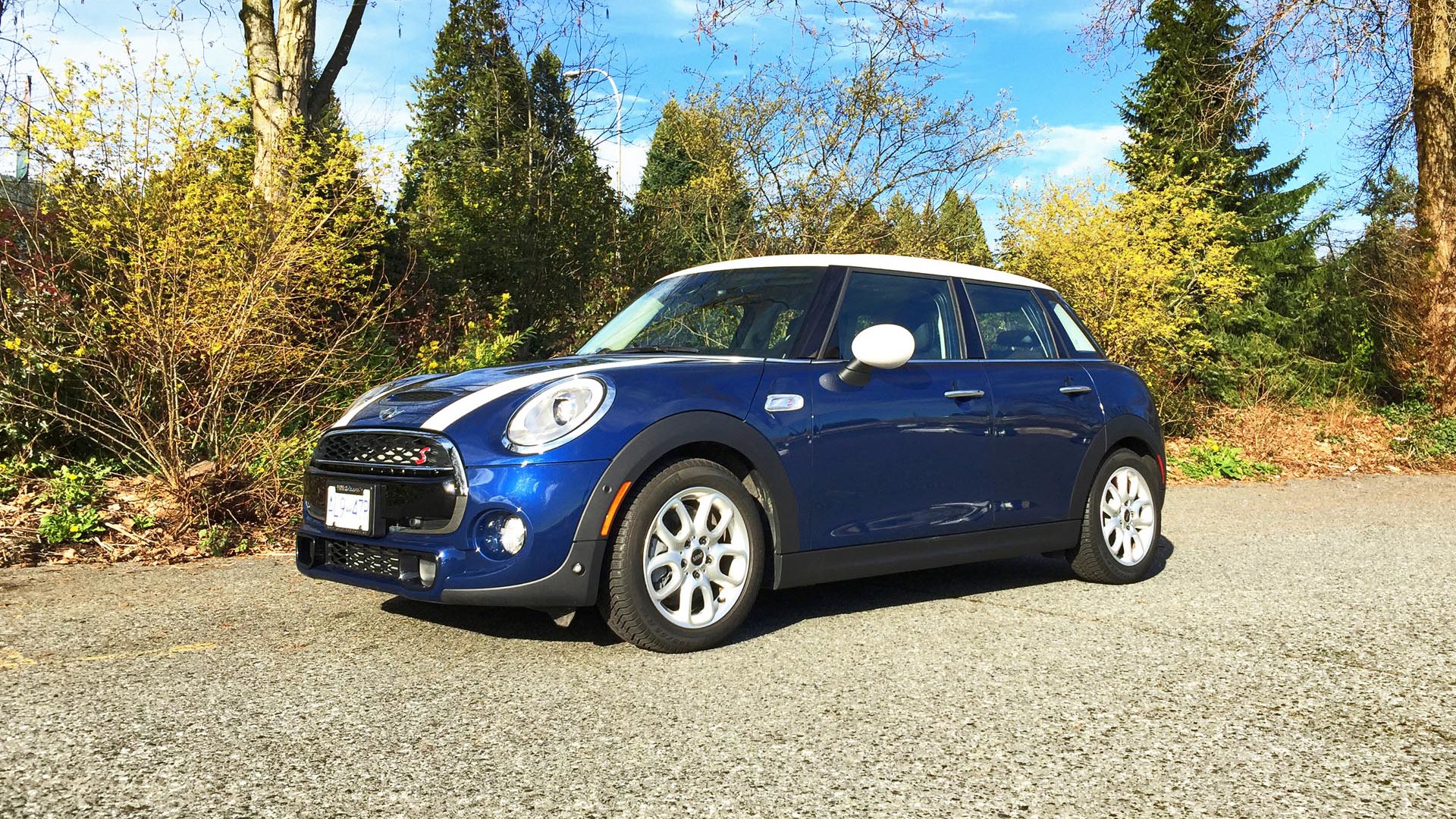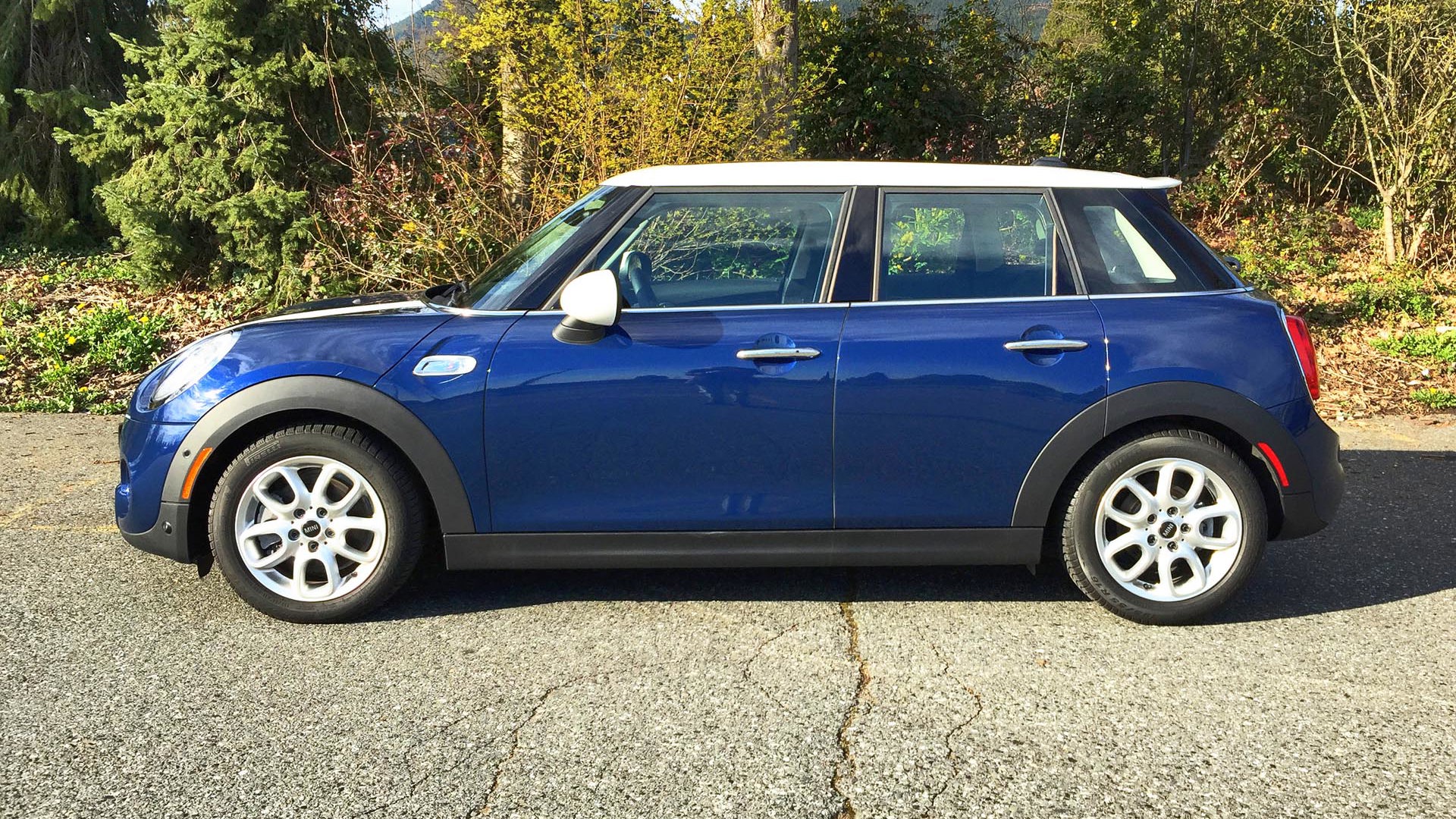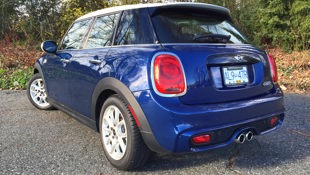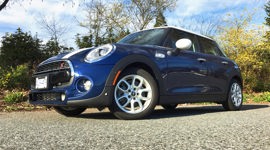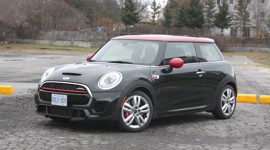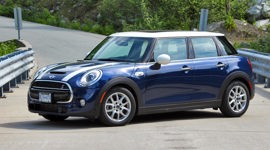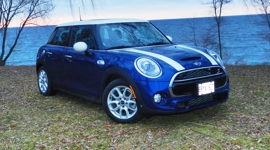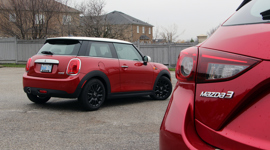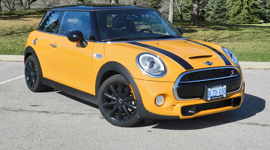If you thought you’d seen a four-door Mini before, you’d be right. In 2011, Mini introduced the SUV-like four-door Countryman which has since evolved into the exclusively all-wheel drive Cooper S Countryman ALL4. It starts at $29,950. Those with longer memories will recall the 2008 Mini Clubman which had a single rear side door on the passenger side that swung out to the rear, and two rear sideways-opening doors instead of a lift-up hatch. The Clubman was discontinued in 2014.
Back in the day, I’m sure some smart advertising agency came up with the terms ‘Five Door’ and ‘Three Door’ because they sounded much better than ‘Four Door’ and ‘Two Door’. But why stop there? They could also include the hood and call it a ‘Six Door’.
The new 2015 Mini Five Door on the other hand, looks like a slightly taller, stretched version of the standard two-door Mini. It has four front-hinged doors and a lift up rear hatch which Mini erroneously refers to as a “door". Back in the day, I’m sure some smart advertising agency came up with the terms ‘Five Door’ and ‘Three Door’ because they sounded much better than ‘Four Door’ and ‘Two Door’. But why stop there? They could also include the hood and call it a ‘Six Door’.
But to avoid naming confusion, I will continue to refer to my four-door tester as the Mini Five Door. Both Five Door Cooper and Cooper S models come exclusively with front wheel-drive starting at $22,240 and $26,740 respectively. That’s a surprisingly modest price jump from the two-door Mini Cooper and Cooper S models which start at $20,990 and $25,490 respectively.
As yet, there is no JCW (John Cooper Works) version of the Mini Five Door although you can order a few JCW appearance accessories on the Cooper S.
Compared to the two-door Mini - oops, I mean the Mini Three Door - the Mini Five Door is 111 mm longer and 11 mm taller. A 72 mm increase in the wheelbase and two additional doors provides easier access to the rear seat for rear passengers though the rear doors are noticeably shorter than the front doors. Still, the door openings are big enough to slide in without bumping your head or scraping your knees and the rear doors make it much easier for parents wishing to install child seats or booster seats. There are anchors and tether latches for three rear child seats.
Two adult passengers can sit comfortably in the rear outboard seats, but the cabin is not really wide enough for a centre rear passenger (although there is a centre rear seatbelt). The centre seat cushion is lumpy and the unfortunate third passenger has to straddle a high centre tunnel. The outboard rear seats are comfortable enough: sitting “behind myself” in the rear seat, I had about an inch of kneeroom, generous footroom under the front seat, and an inch of headroom - the latter reduced by the optional Panorama sunroof in our test car that comes as part of the Essentials Package ($1,200). The front sunroof opens but the rear sunroof is a non-opening glass panel with a sliding sunshade.
The Mini Five Door’s stretched wheelbase also provides more cargo room behind the rear seats, up from 211 to 278 litres, a 30 percent increase. As there is no spare tire (the car comes with a tire inflator kit), the trunk has a deep well which adds cargo volume. With the seats up, a standard rear privacy cover hides the trunk’s contents from curious eyes.
Buttons on the top of the rear seatbacks allow you to fold down the standard 60/40 split rear seatbacks which effectively triples cargo space to 941L. But as the folded seatbacks are not level with the cargo floor, it is impossible to slide long, heavy objects, such as desks and bookcases, into the cargo area without opening the rear doors and lifting the cargo from the side. Still, there’s no denying the practicality of the Mini’s large hatch opening and the extra cargo length afforded by folding rear seatbacks. The Cooper S Five Door has a maximum payload of 401 kg.
The Five Door’s interior continues Mini’s bold, expressive styling theme dominated by a plate-sized information display in the centre dash. In the beginning, this used to be a very large speedometer but now it incorporates a rectangular 8.8-inch (diameter) screen that can display navigation, audio, telephone, trip info, rearview camera, parking sensor display, settings, and other vehicle information, all of which are selected via a control dial on the lower console between the front seats. The large centre dial also incorporates the radio controls and hazard warning lights button. The speedometer and tachometer are located on top of the steering column directly ahead of the driver where they are easily visible just below the windscreen; both move up-and-down and in-and-out with the tilt/telescopic steering wheel. Still, I had to lift the steering column to its maximum height to suit my seating position and I found the numerals on the speedometer rather small for at-a-glance viewing.
My test car had the optional head-up display (part of the optional Visibility Package for $1,200) which features a clear plastic screen that rises up from the dash and displays a digital speedometer and tachometer. It’s designed so that the driver doesn’t have to refocus their eyes from the road as much, but I found it rather distracting, preferring to use the regular speedometer and tachometer instead.
Interior materials quality has improved for 2015. The materials look more expensive and the fit is better although my test car’s all-black colour scheme was a bit depressing (grey and maroon are available).
The standard leatherette front sport seats (optional leather and cloth) are well-made and the checkered black-and-white trim on the dash adds to the racy look. Still, the Mini’s interior doesn’t have the smooth, integrated look of a GTI. The centre dial seems exaggerated in size, the round air vents look oversized, the inside door handles and door speakers protrude rudely from the doors, and the instrument panel seems like an assembly of parts rather than one finished piece. I guess it’s not my cup of tea!
On the plus side, the front sport seats with their taller side bolsters, thigh support extension, adjustable lumbar support, and height adjuster feel very supportive and keep you snug in the corners. Each has a seat heater with three temperature selections. The thick, leather-wrapped steering wheel has big thumb grips at the ten-and-two positions for a masterful grip, and the manual shift lever is perfectly placed for reach as is the screen controller dial that is located between the front seats.
A folding armrest between the front seats provides a place to rest the right arm while cruising down the highway, but in everyday driving, I preferred to fold it up because it interferes with gear changes (with the manual transmission). The armrest includes a small storage bin under the padded lid but it’s so small, I couldn’t fit my large smartphone in it. In fact, other than the glovebox, there are no interior storage cubbies.
A trip computer integrated into the speedometer provides useful information for the driver, such as average fuel economy, outside temperature, current speed and distance to empty. The driver can toggle between values by pressing the BC button on the end of the left stalk.
The big screen in the centre dash displays audio, telephone, radio, multi-media, vehicle info and settings as well as a rear-view camera and parking sensor graphic. You can move around the screen by turning, pushing, or pressing the round controller dial on the lower console between the front seats. You can also take a shortcut by pressing one of the buttons surrounding it: Menu, Media, Telephone, Navigation, Back, and Option. Letters and numbers can also be written on the control dial, one at a time, with a finger, but I found this to be slower and less convenient than the alternative. Overall, I found the system easy to use, but I would expect it to take a few weeks for an owner to master all the functions.
Lower down on the centre console are illuminated dials for the climate control – my test car had the optional dual-zone automatic climate control (part of the Loaded Package $1,200). Backlit in bright orange, the dials are easy to see and operate.
Below that are Mini’s signature toggle switches (which hark back to the original 1959 Austin Mini). The big red one in the middle starts and stops the engine (when equipped with keyless ignition).
Phones can be charged with the 12-volt power outlet at the bottom of the centre stack or plugged into the auxiliary port, and memory sticks can be inserted in a USB slot to play music. Alternatively, standard Bluetooth audio allows music to be streamed wirelessly from a smartphone. Operating the telephone and navigation system using voice commands is fairly easy. For example, the system was able to correctly understand a difficult-to-pronounce name in my phonebook contacts list. As there were two phone numbers associated with that name, the system asked me which phone number to use, before dialing it correctly. Voice recognition programs in cars seem to be improving with each model year.
The driving experience in the Cooper S Five Door is much like the Cooper S Three Door, except that the ride is smoother, the cabin is quieter, and the car is not quite as nimble. It retains a fully independent suspension: McPherson struts up front and a multi-link setup at the rear. Handling is still superb but the car feels slightly bigger and heavier than a two-door Mini Cooper S (which it is). However, unless you’ve recently driven the Three Door, you probably wouldn’t be able to tell.
Standard electronic safety nannies help keep the car under control in adverse driving conditions. The Mini Five Door includes stability control and traction control, an electronically-controlled front differential lock that transfers power to the front wheel with the most grip when cornering, and Cornering Brake Control which automatically varies brake pressure to different wheels when cornering to enhance stability.
195/55R16-inch all-season run-flat tires on “Loop spoke” alloys are standard equipment on the Cooper S Five Door but my test car was equipped with Pirelli Snow Control 195/55R16 winter tires that proved to be very grippy over wet roads and surprisingly quiet over dry roads. The standard all-season run-flat tires allow the vehicle to be driven for up to 80 kilometres at speeds up to 80 km/h on a flat tire in order to reach the closest service centre.
While the Cooper Five Door has a twin-scroll turbocharged direct-injection 1.5L three-cylinder engine that develops 134 hp from 4,500 to 6,000 rpm and 162 foot-pounds of torque at just 1,250 rpm, the Cooper S Five Door offers a 2.0L twin-scroll turbo four-cylinder engine that pumps out 189 hp at 4,700 to 6,000 rpm and 207 lb-ft at 1,250 rpm. Thanks to the turbo, the Cooper S offers strong low speed throttle response and brisk acceleration. In a 0 to 100 km/h sprint, the Cooper S Five Door with manual transmission takes 6.9 seconds, 1.3 seconds faster than the Cooper Five Door, according to Mini’s own figures. I found the Cooper S engine surprisingly quiet during acceleration with no turbo whistle to speak of. That’s partly because the Five Door includes more sound insulation including an underbody cover that improves aerodynamics and reduces interior road noise.
Like many cars these days, the Mini Five Door includes driver-selectable electronically-controlled performance settings. Simply by adjusting a dial behind the shift lever, the driver can select from three driving modes: Sport, Normal and Green. These adjust throttle sensitivity, steering response, exhaust sounds, and shift timing (with the automatic transmission). The most noticeable difference is in throttle response: in any given gear, throttle response varies from weak (Green) to acceptable (Normal) to sporty (Sport). Green mode saves fuel – the Eco gauge even tells you how many extra kilometers you’ve driven by choosing Green mode – but performance feels lethargic. Sport mode offers acceleration and steering response that’s more appropriate for this performance-oriented hatchback but performance in Normal mode is quite acceptable for the daily commute.
2015 NRCan fuel economy ratings for the Five Door Cooper S are 10.0 city/7.0 hwy/8.6 combined. My car’s fuel economy readout was showing 8.4 L/100 km, almost right on the money. That’s not particularly economical, but it’s within an acceptable range for a performance-oriented four-door subcompact. The Hyundai Veloster Turbo, for example, offers 9.7 city/7.0 hwy/8.5 combined. The Ford Fiesta ST is a little better, offering 8.9 city/6.8 hwy/8.0 combined. However, Premium 91-octane gas is recommended for the Cooper S (mid-grade 89-octane is acceptable) while the Fiesta ST and Veloster Turbo only require Regular gas.
At 40L, the fuel tank in the Cooper S Five Door is surprisingly small, even smaller than the Cooper Five Door’s 44-litre tank. Still, that gives the Cooper S a combined city/hwy range of 465 km.
To help save fuel, the Cooper S Five Door includes a standard engine start-stop system that automatically turns off the engine while waiting at traffic lights and restarts it as soon as the clutch pedal is depressed. I was really surprised at how quick, how quiet and how smooth this system is. It’s virtually vibration-free and barely audible; impressive for a four-cylinder engine. A ‘Ready’ mode in the tachometer indicates when the engine is in auto-stop mode.
My test car had the standard six-speed manual transmission but an optional six-speed automatic with paddle shifters is also available for $1,650. The six-speed manual is easy to move from gear to gear with defined gear positions and reasonably short throws, but it sounds a bit clunky. Clutch take-up is smooth and easy to engage in stop-and-go traffic. In top gear, the engine turns over a comfortable 2,300 rpm at 100 km/h.
Braking performance is excellent. With standard four-wheel disc brakes (the Cooper S has larger front rotors than the Cooper) and a relatively trim curb weight of 1,313 kg, the Cooper S stops very quickly, although I don’t have test data to back that up. The brakes get a lot of help from standard electronic systems such as anti-lock brakes, electronic brake force distribution which distributes braking pressure based on load and and vehicle balance; “Brake Fade Support” which applies additional pressure in panic braking situations, “Brake Standby” which automatically moves the pads closer to the discs when the accelerator pedal is released suddenly in anticipation of braking; “Brake Drying” which automatically moves the pads closer to the discs to dry them when the windshield wipers are activated; and “Cornering Brake Control” which asymmetrically distributes brake pressure when cornering while braking.
The Mini Five Door also has “Drive-off Assistant” that holds the car in place for 1.5 seconds on a hill when the brake pedal is released to prevent it from rolling back.
Like all Minis, the forward position of the roof makes it difficult to see overhead stoplights when sitting at the stop line. If there isn’t an additional side stop light, I usually find myself ducking and craning my neck to check when the light has turned green. Otherwise, the driver’s visibility is very good thanks to all the windows. The driver’s view to the rear is improved by folding rear head restraints: when not in use, all three rear head restraints fold over flat. As well, the Mini Five Door is available with a rear-view camera which includes a top-down graphic of the car showing how close the car is to obstacles using green, yellow and red warning colours in addition to audible beeps. This is very handy when parking in close proximity to walls and other cars.
My 2015 Mini Cooper S Five Door test car had a base price of $26,740 but with $7,590 worth of options, a hefty $1,955 freight charge and $100 a/c tax, the total price came to $36,385. That’s a lot of money for a subcompact, but buyers who want the bold styling, city-friendly size and great handling of a Mini with the extra practicality of Four Doors may find that price fair enough for a premium small car.
| Warranty: 4 years/80,000 km; 4 years/80,000 km powertrain; 12 years/unlimited distance corrosion perforation; 4 years/unlimited distance 24-hour roadside assistance Competitors: |
| Model Tested | 2015 Mini Cooper S Five Door |
|---|---|
| Base Price | $26,740 |
| A/C Tax | $100 |
| Destination Fee | $1,955 |
| Price as Tested | $36,385 |
|
Optional Equipment
$7,590 (Loaded Package $1,100: Automatic climate control, Comfort Access, Automatic Dimming Interior Mirror, Front Centre Amrest, Rain Sensor and Automatic Headlights, Dynamic Damper Control; Essentials Package $1,200: Front and rear fog lights, Panorama Sunroof, heated front seats; Wired Package $1,400: 8-inch screen with console controller, navigation system, Bluetooth and USB audio, Mini Connected, integrated visual display, front centre armrest; Visibility Package $1,200: rear-view camera, head-up display, Park Assistant package; LED Lights Package $1,000: LED headlights, LED fog lights, white turn signals; Stand alone options: Harmon Kardon sound system $750; metallic paint $590; bonnet stripes $350)
|
|
